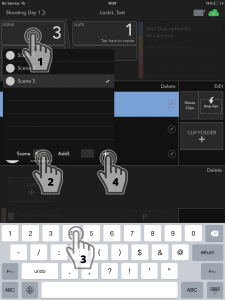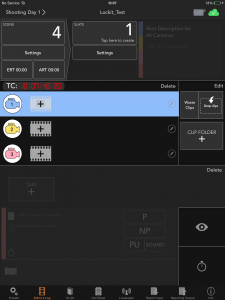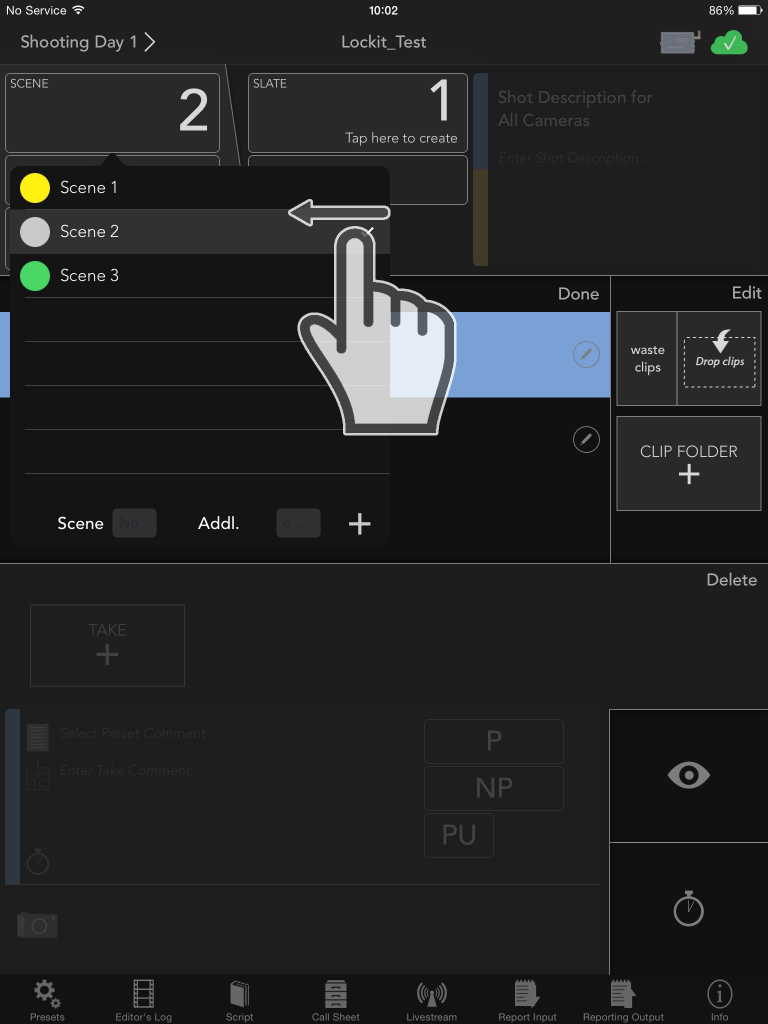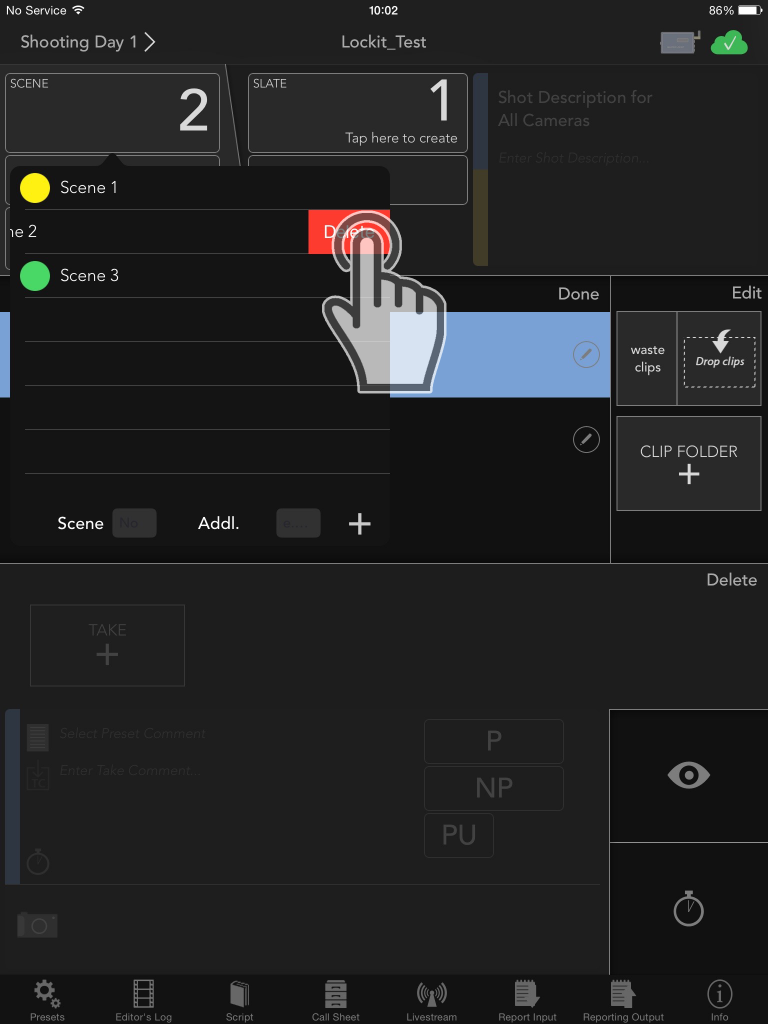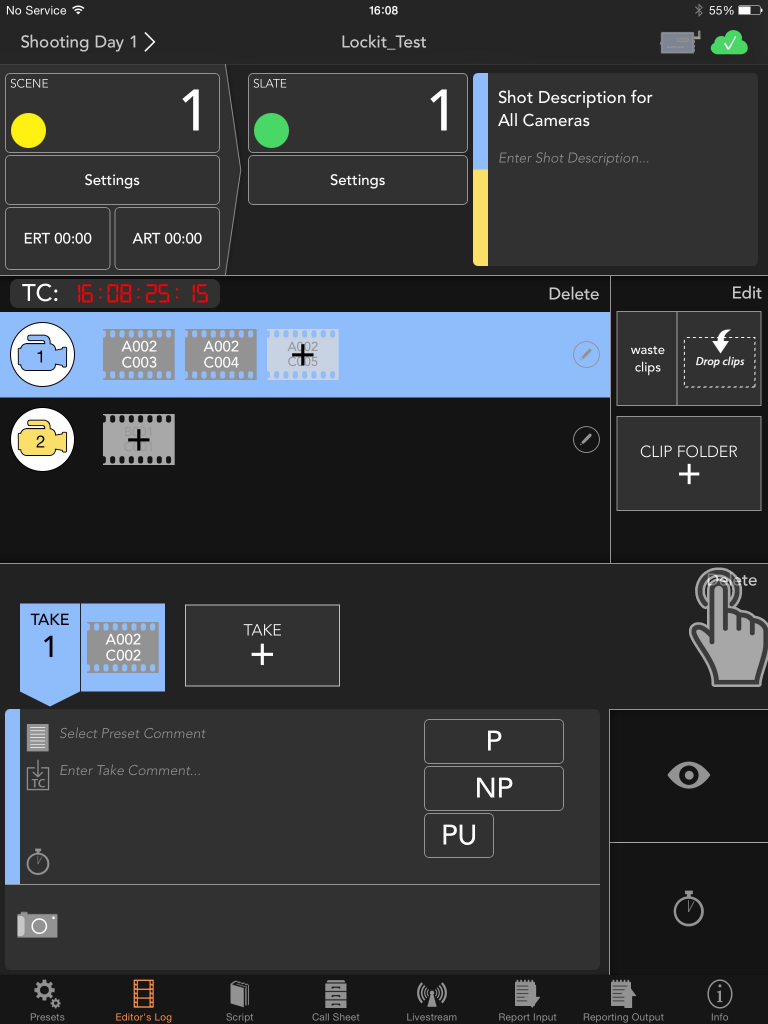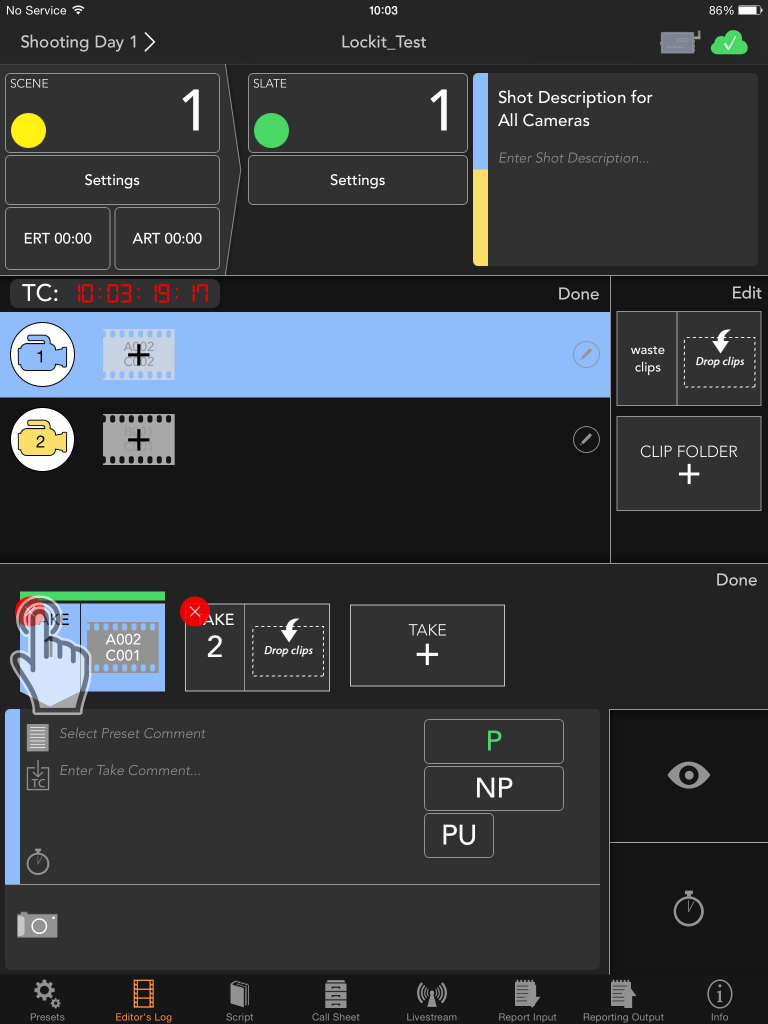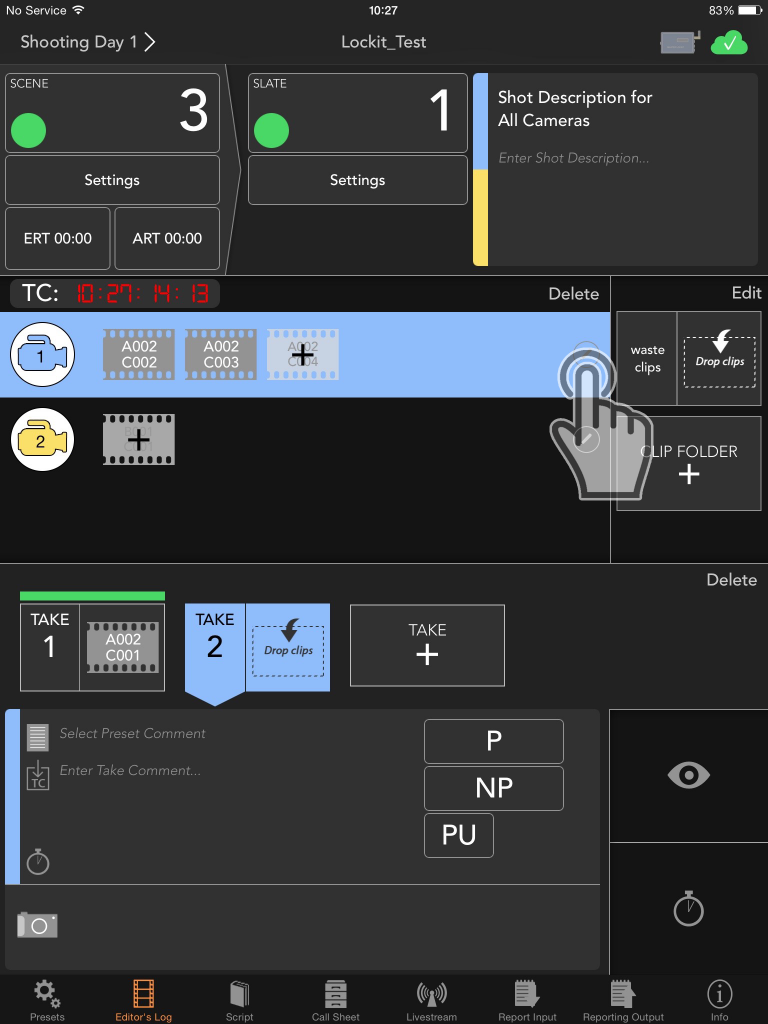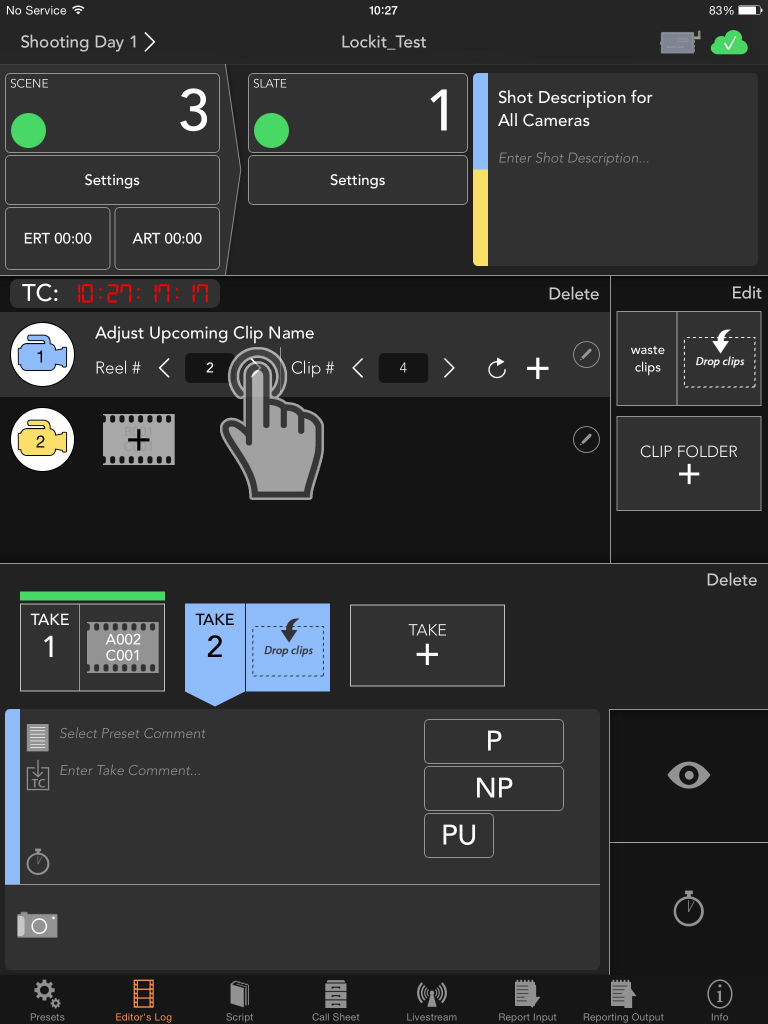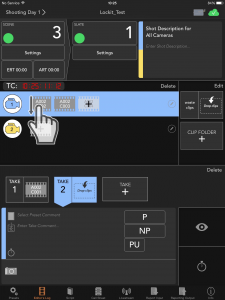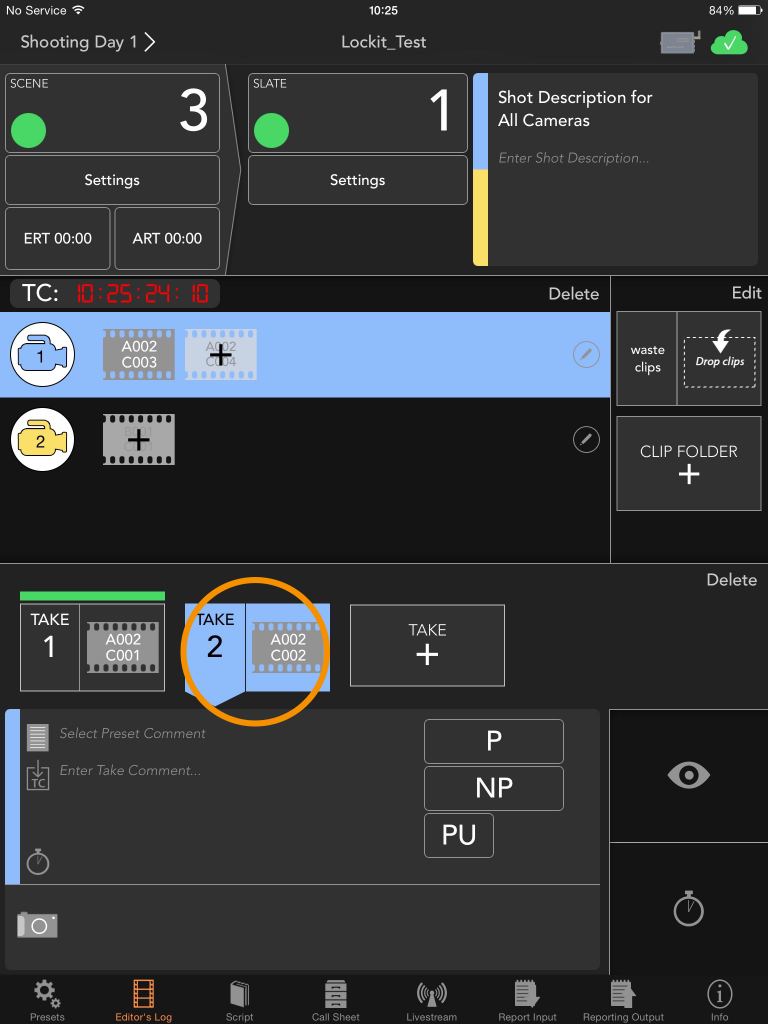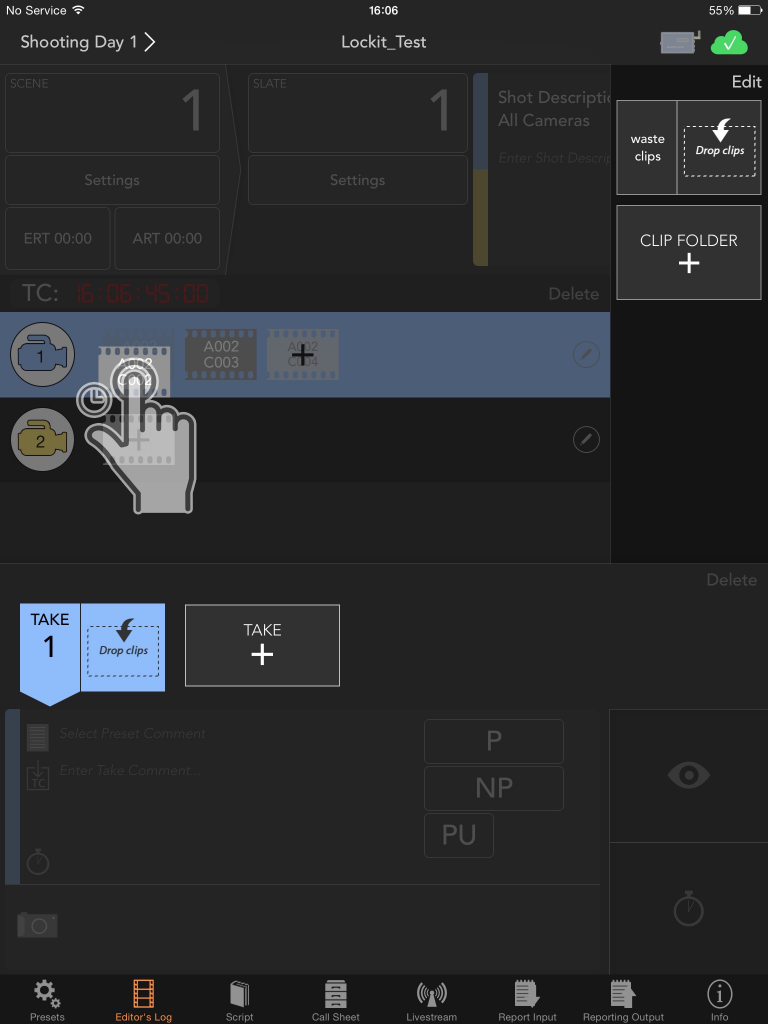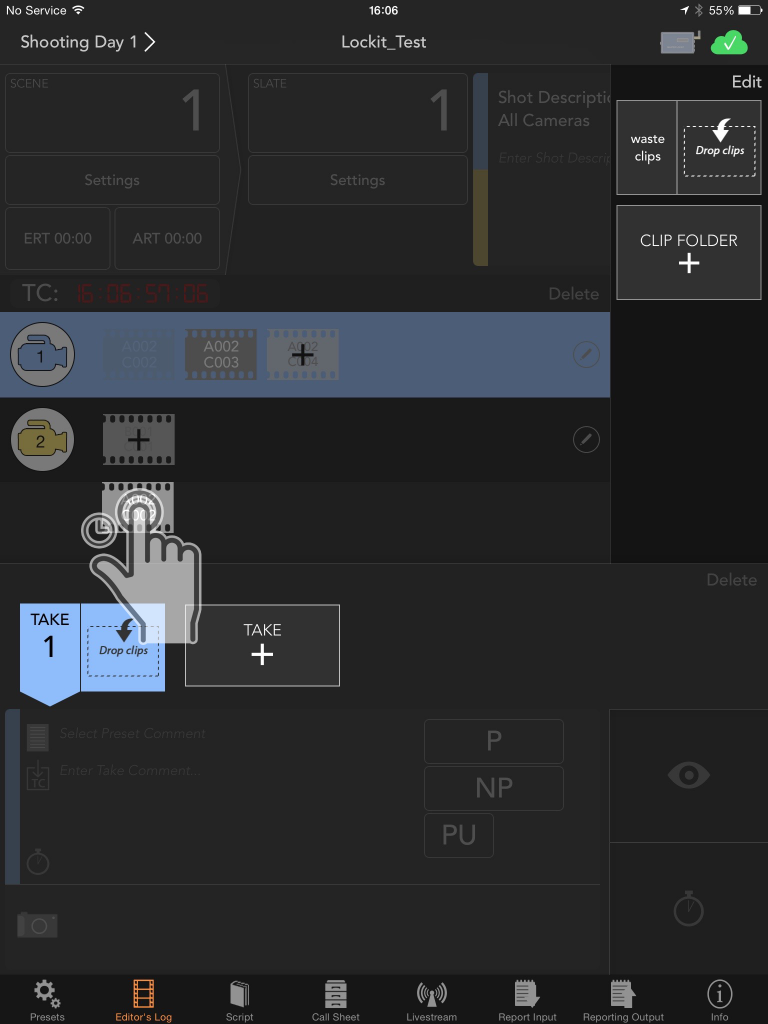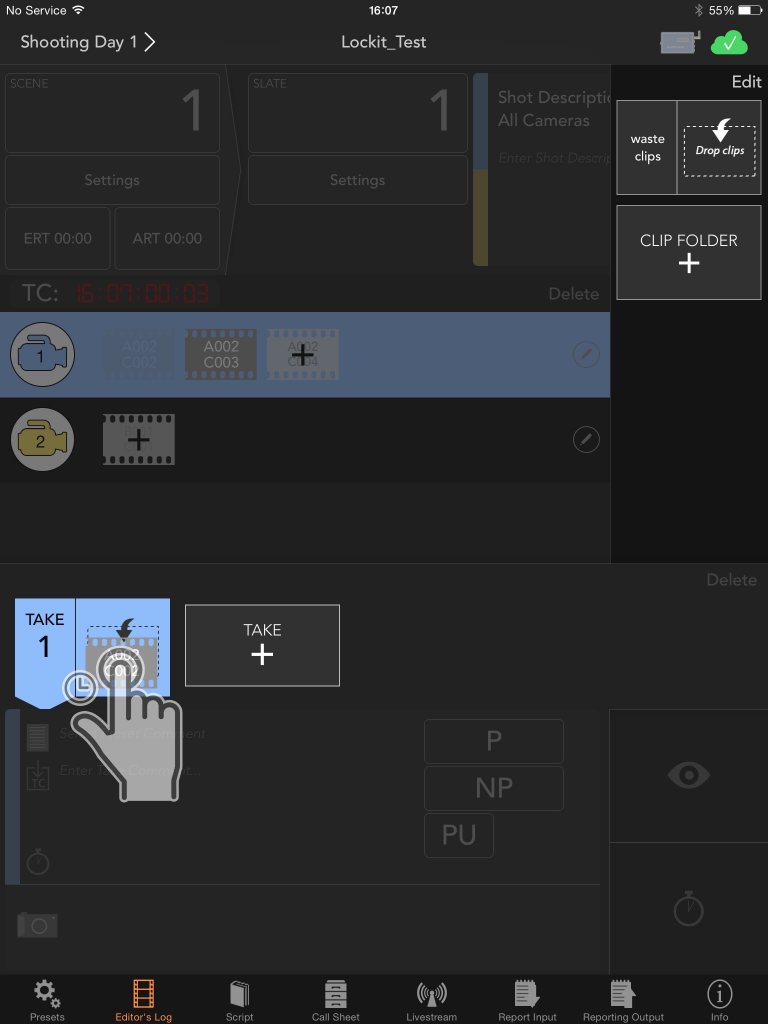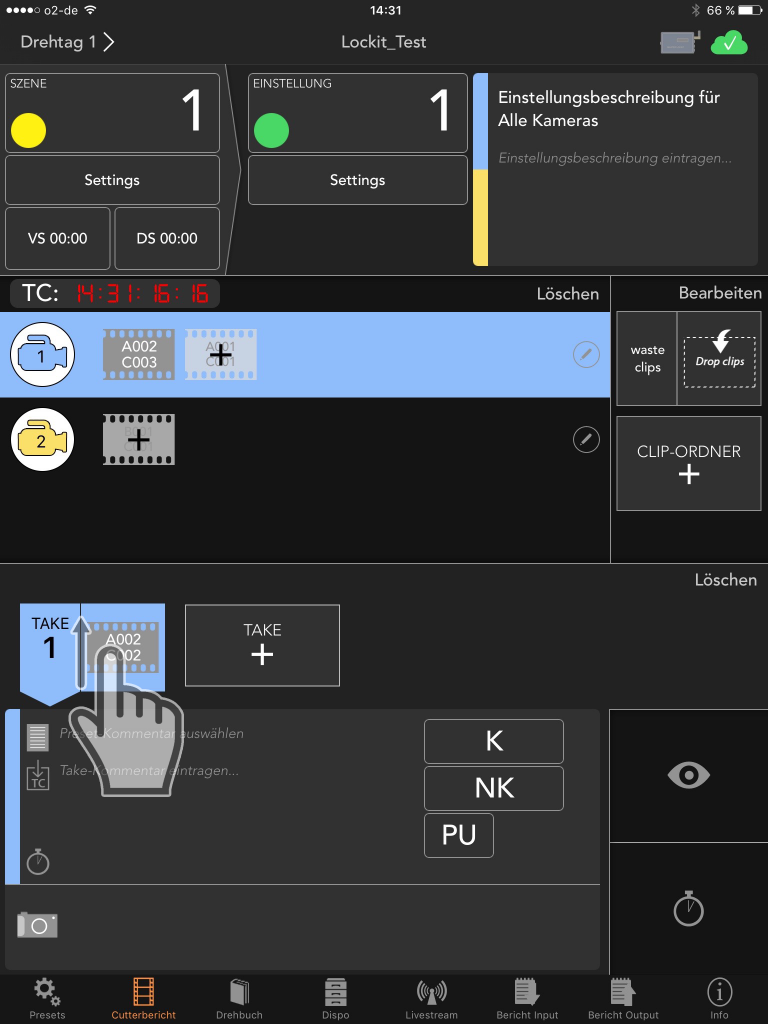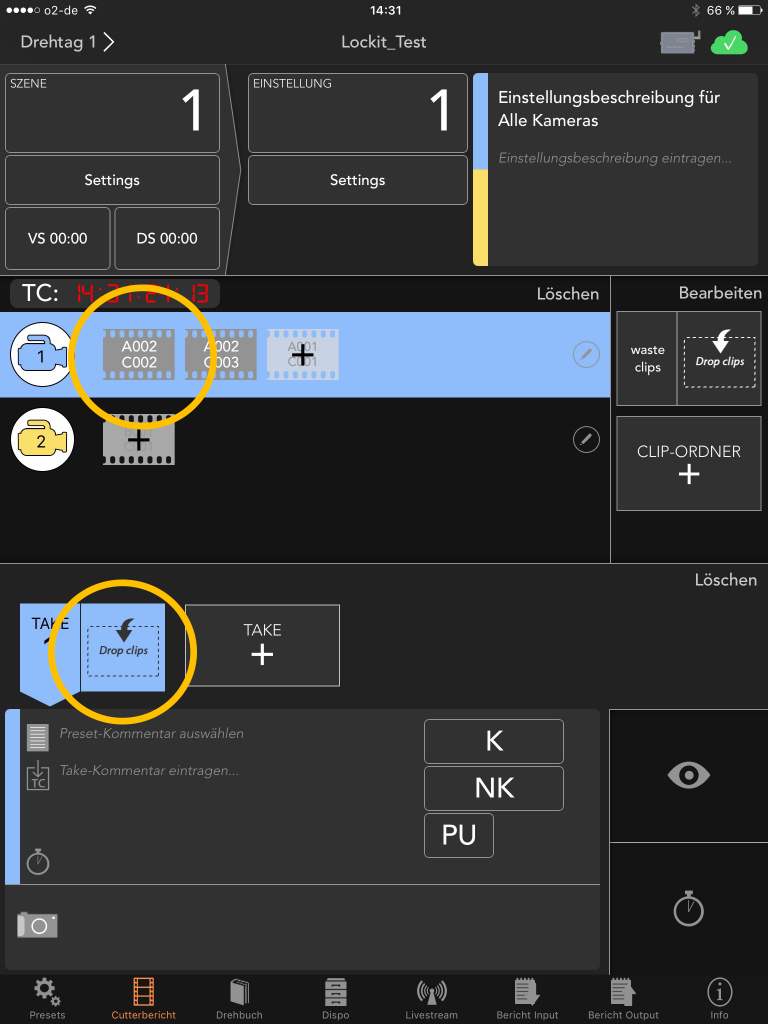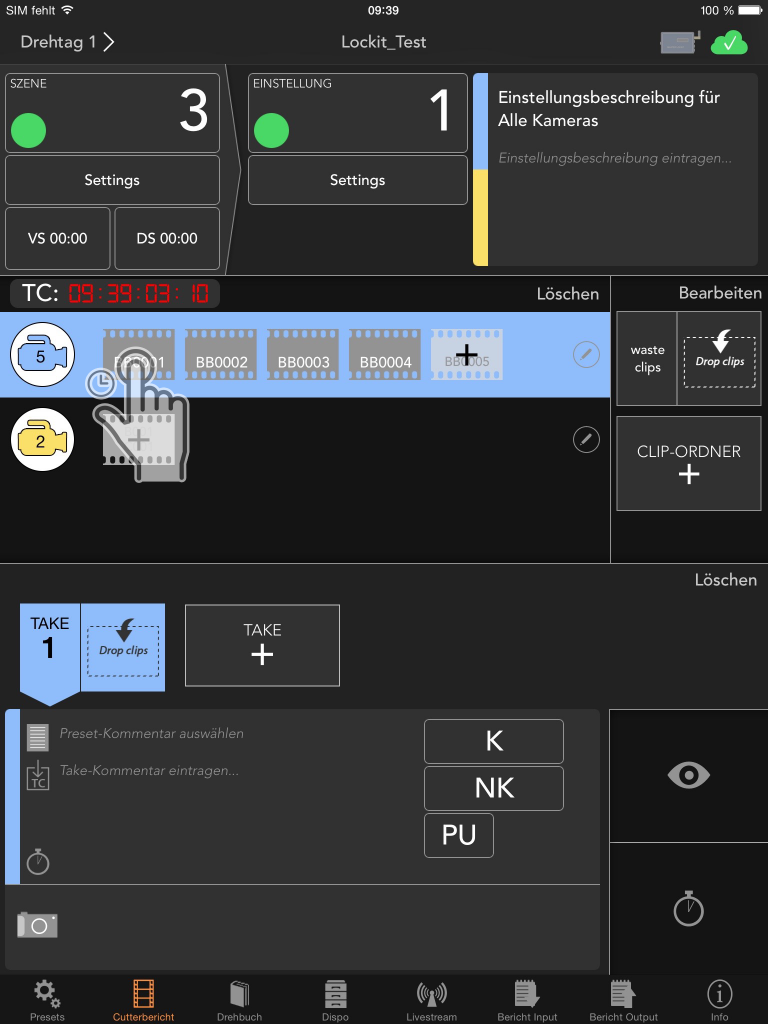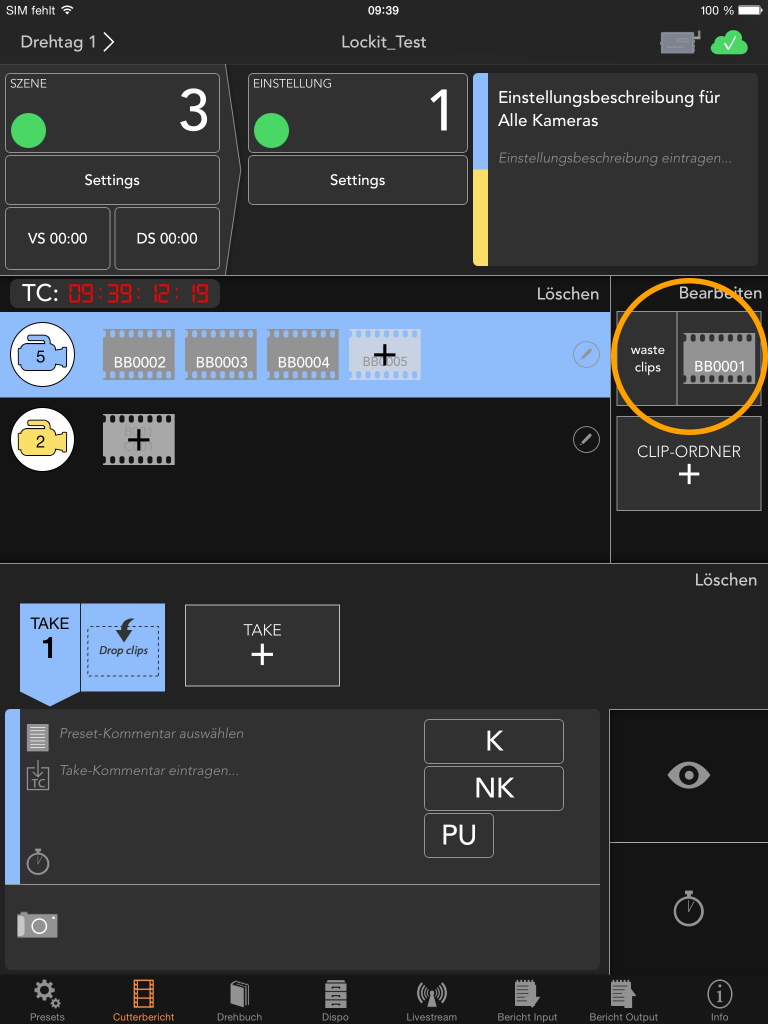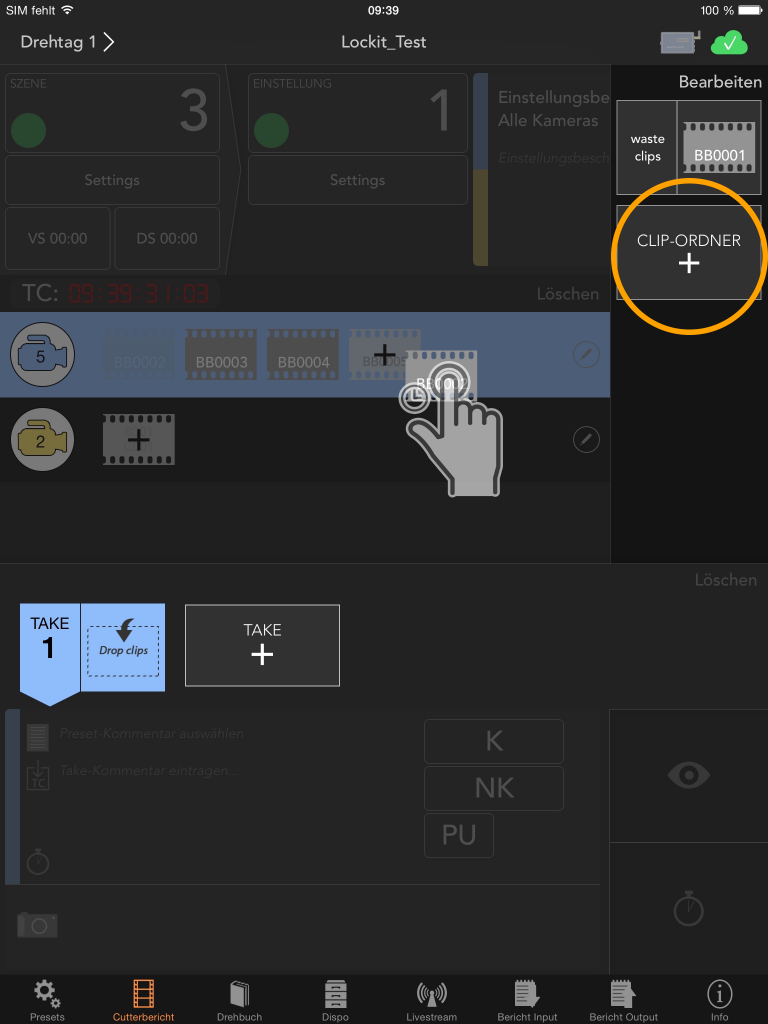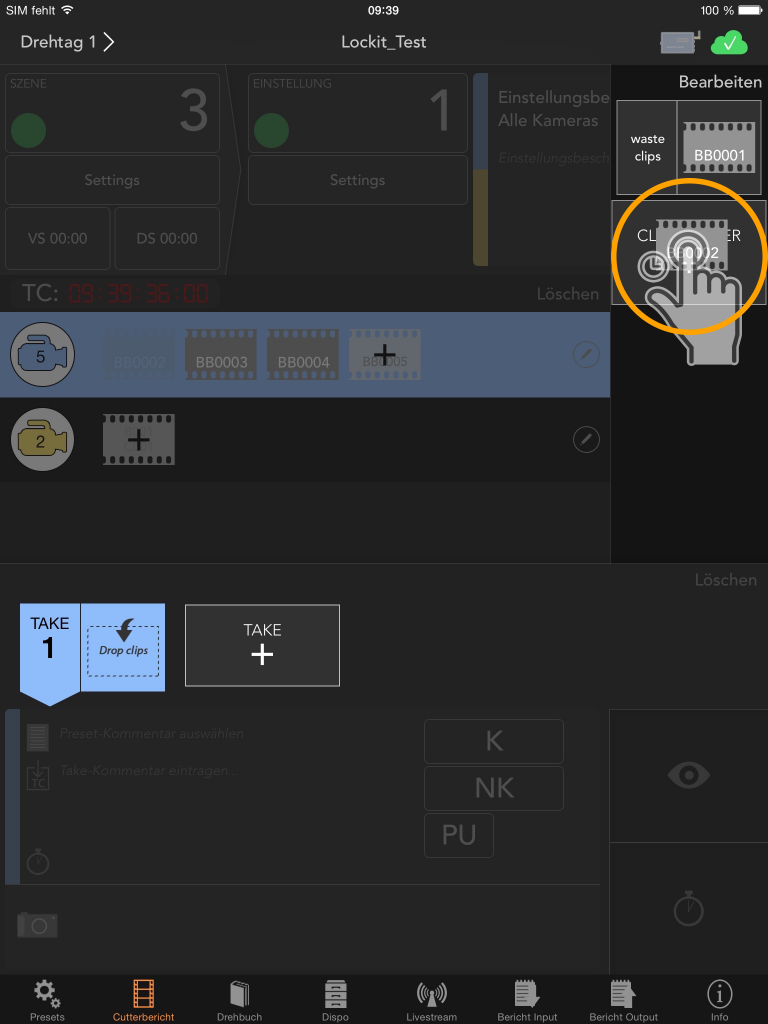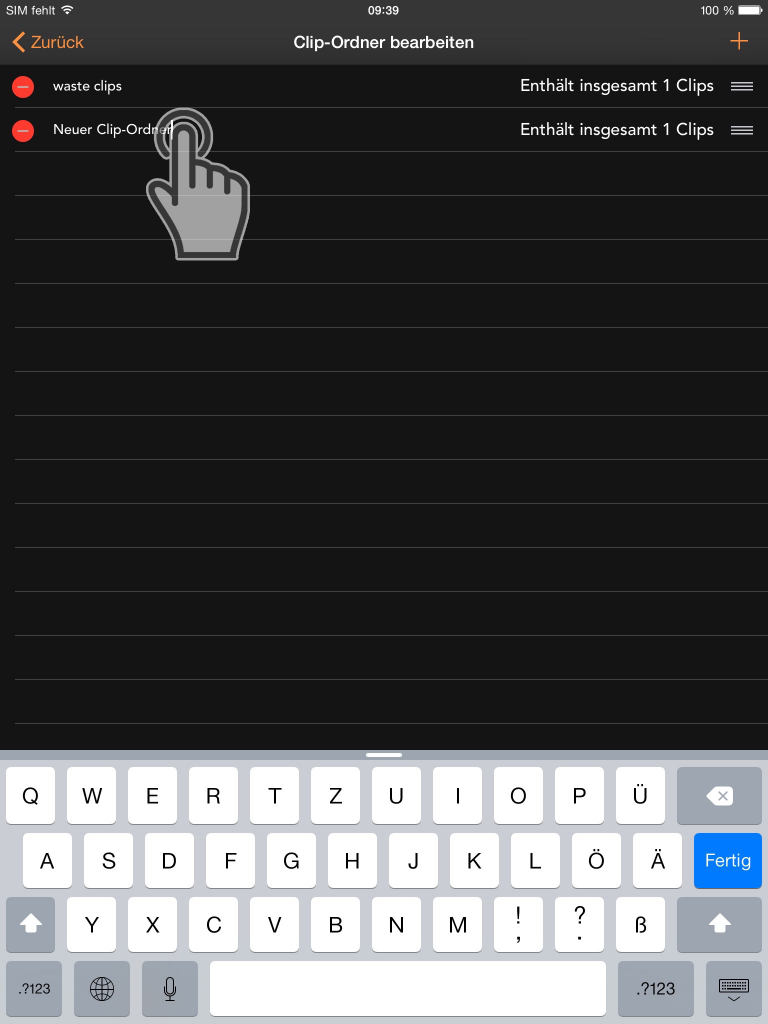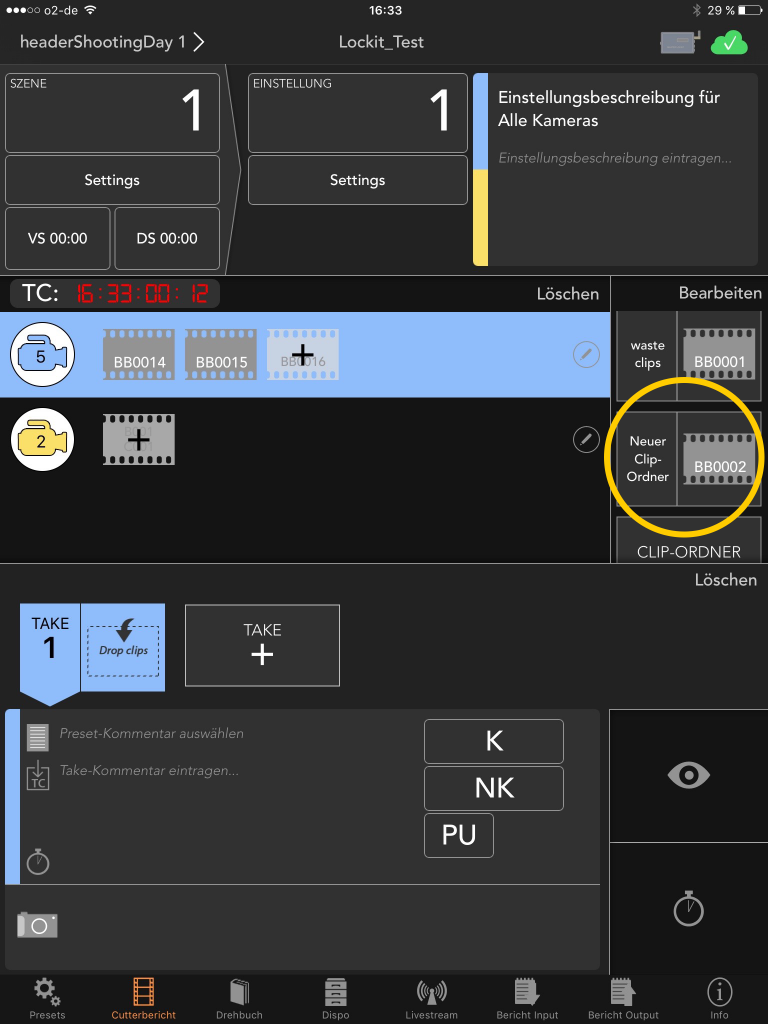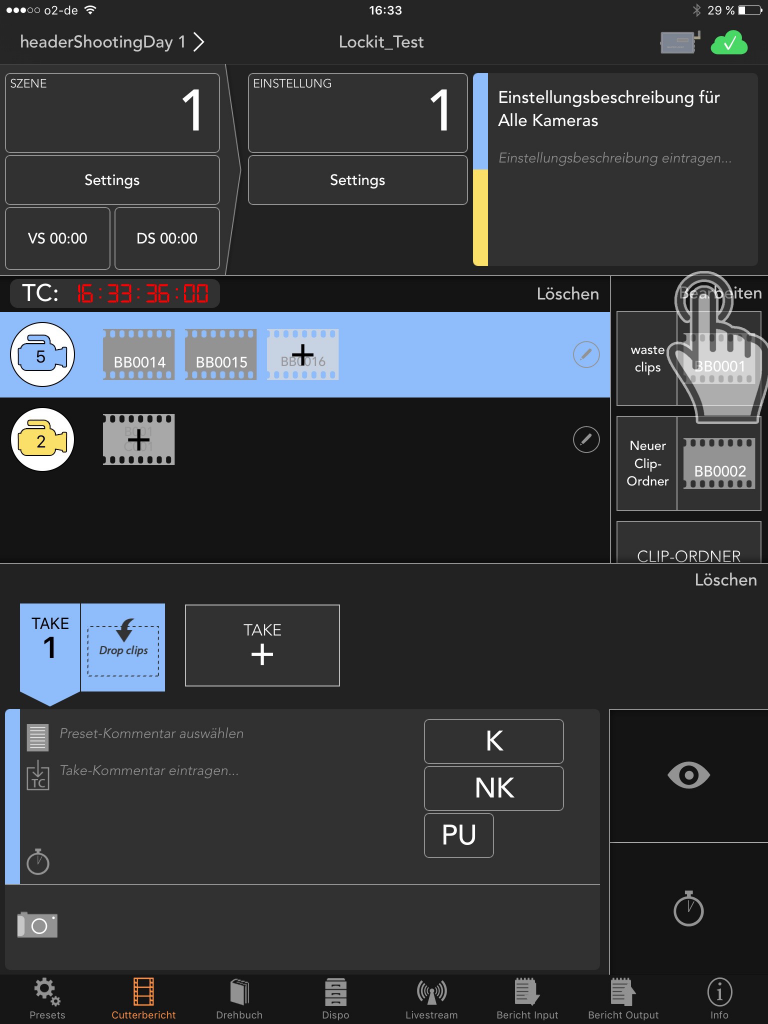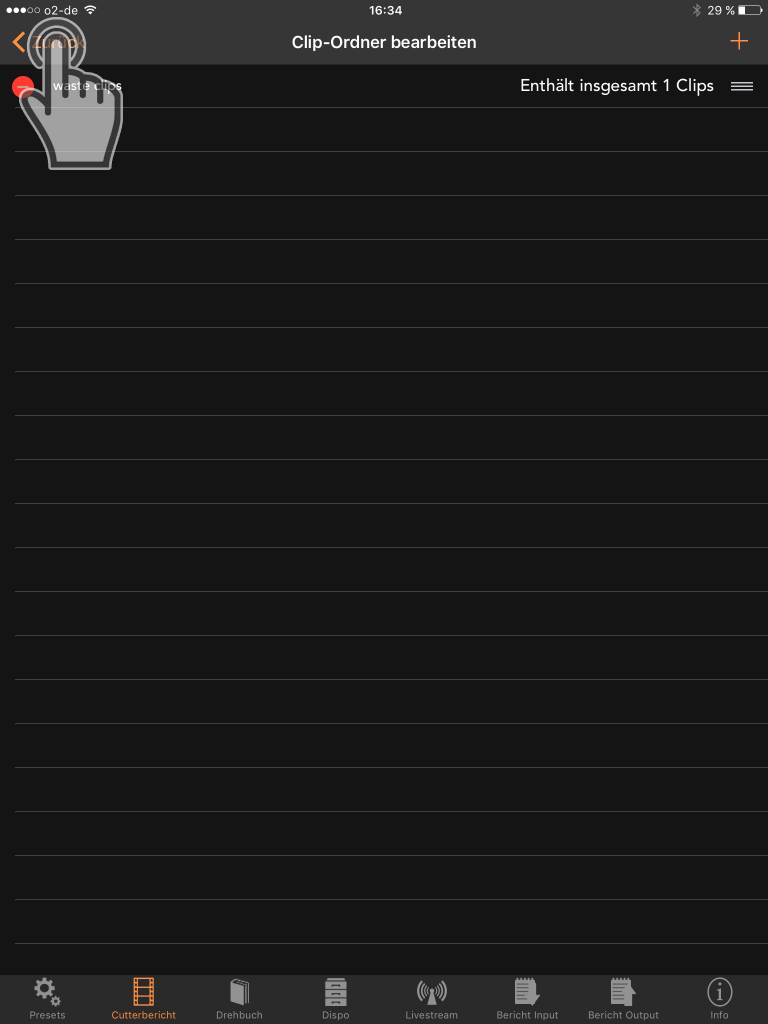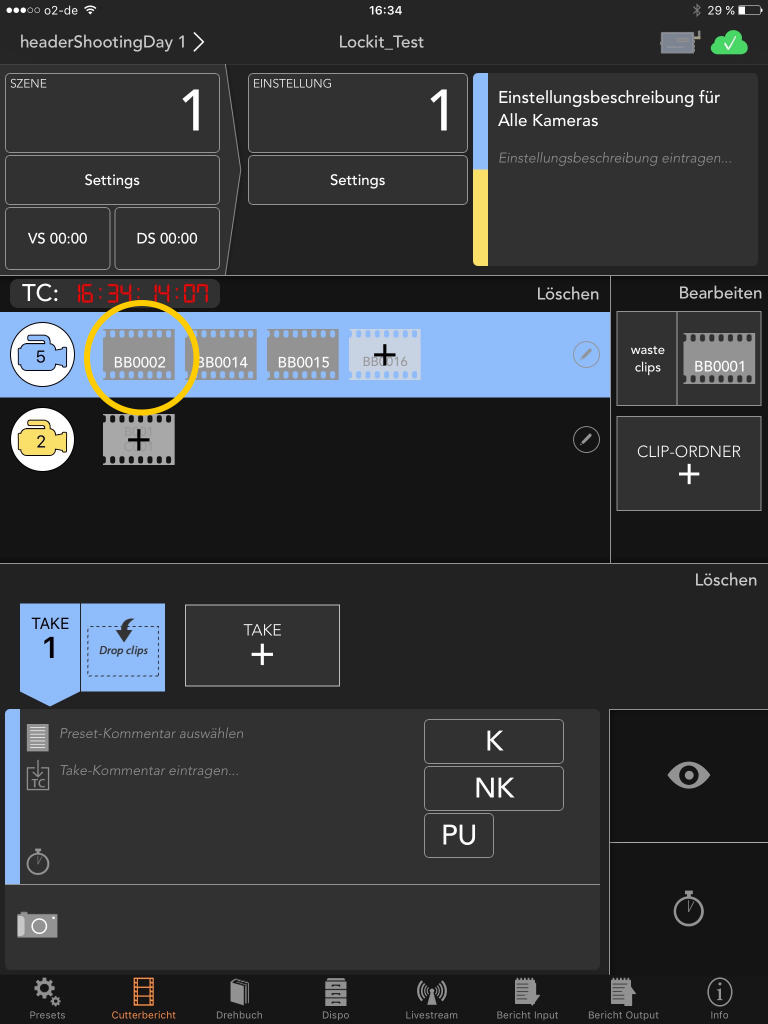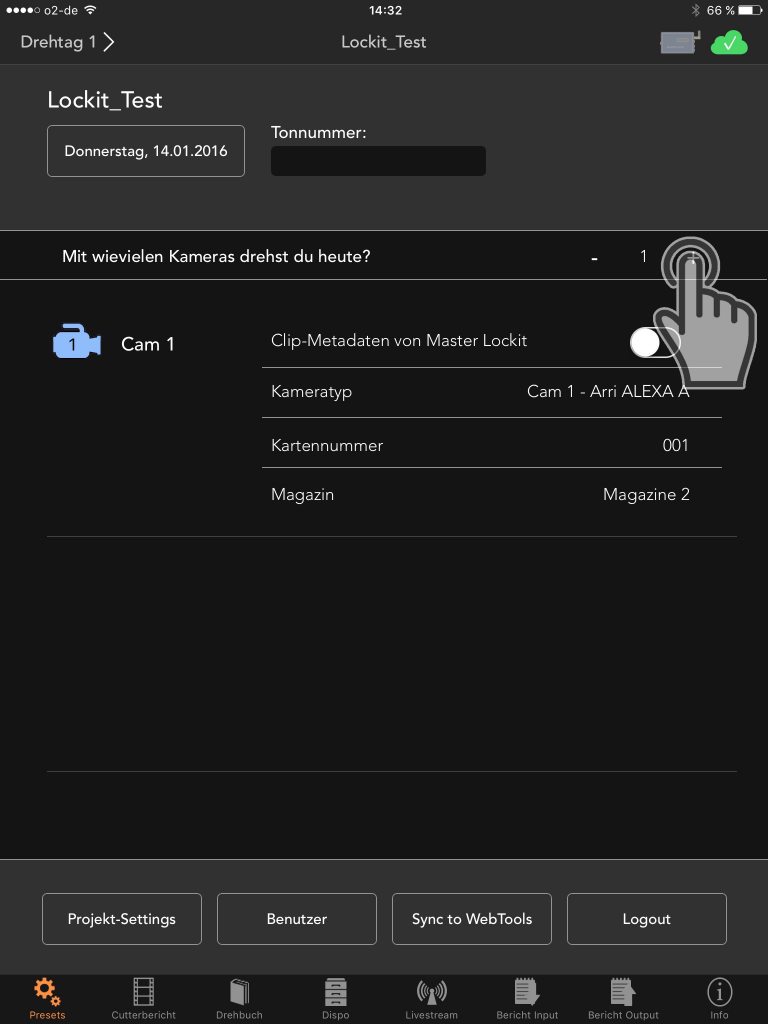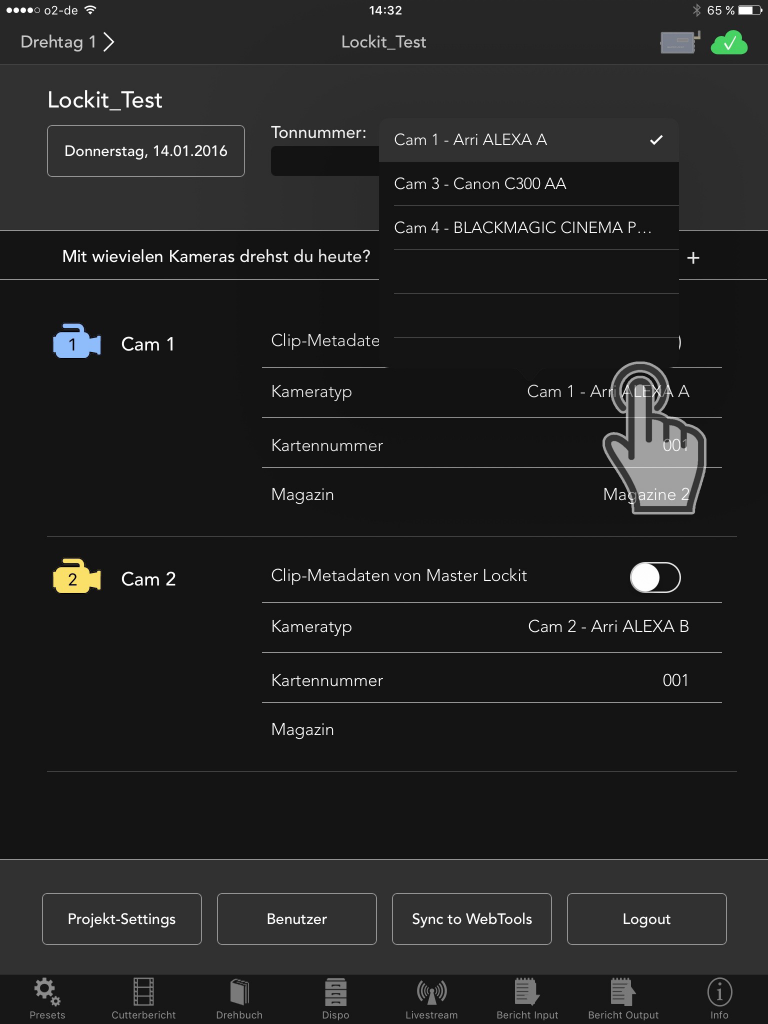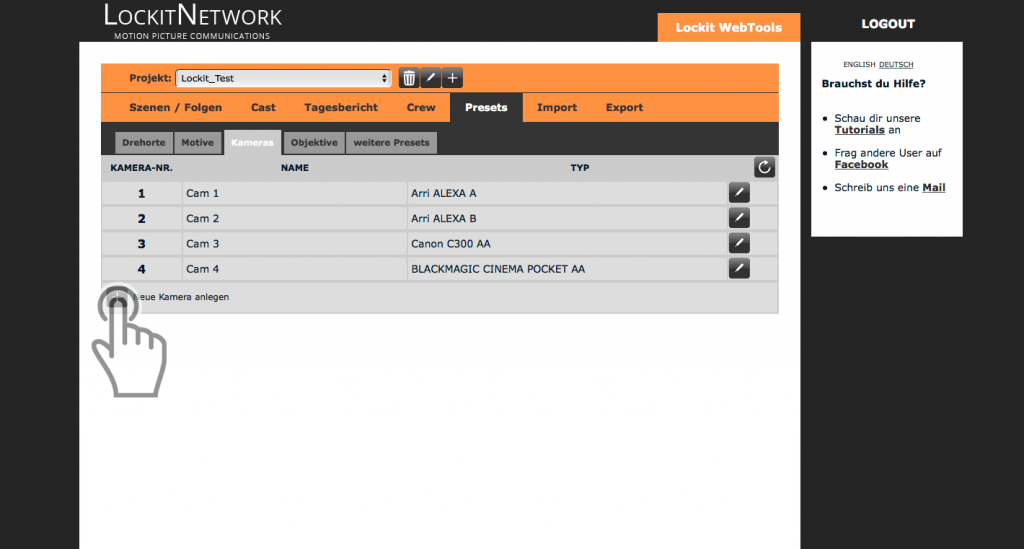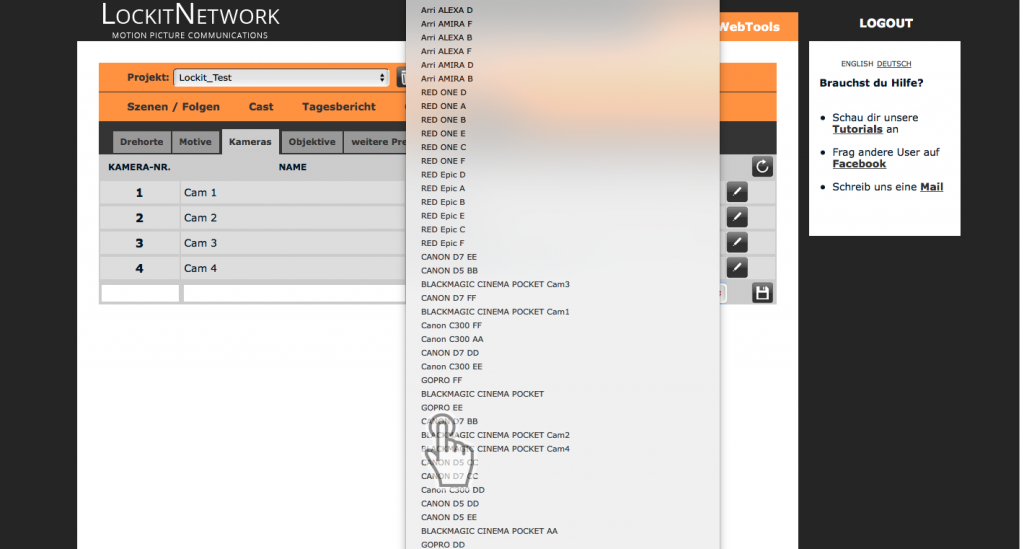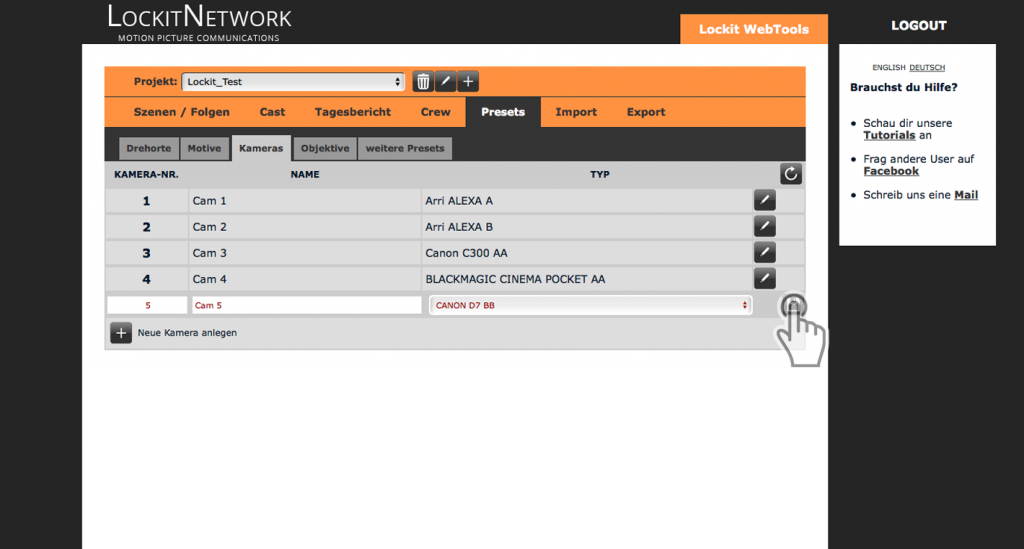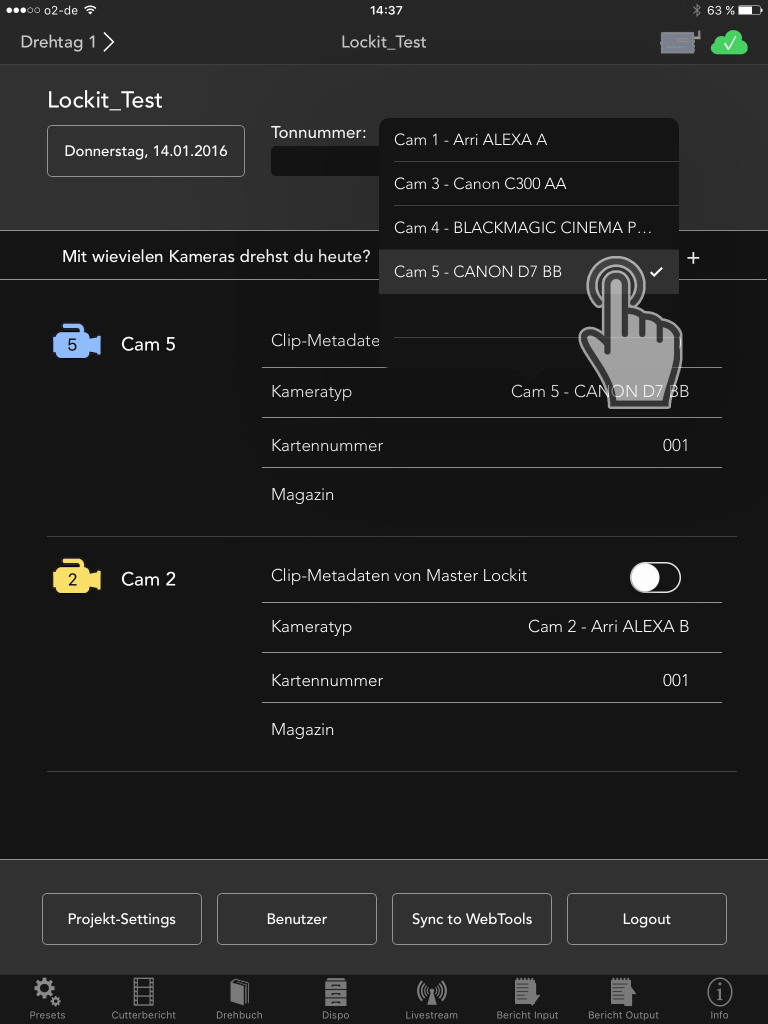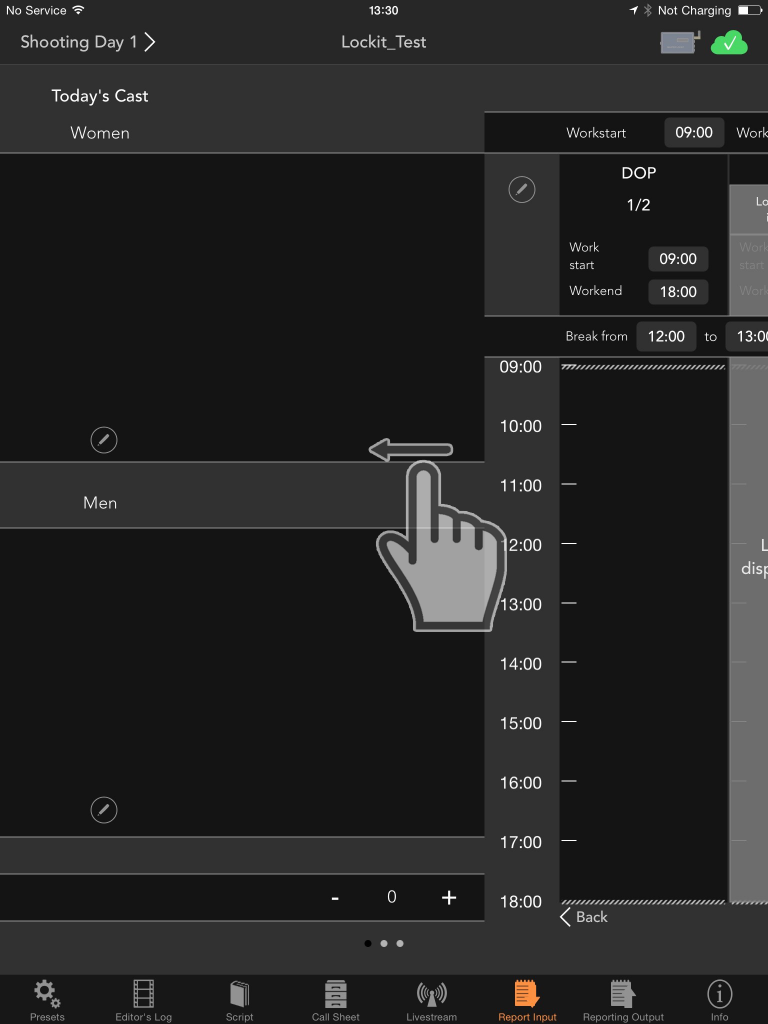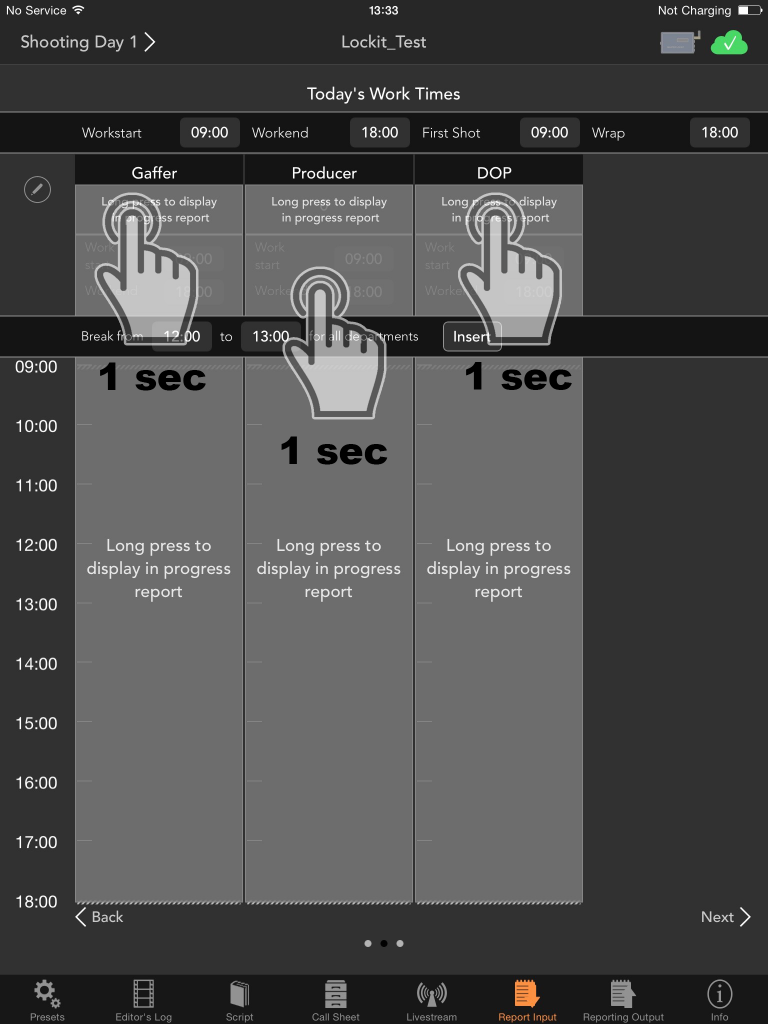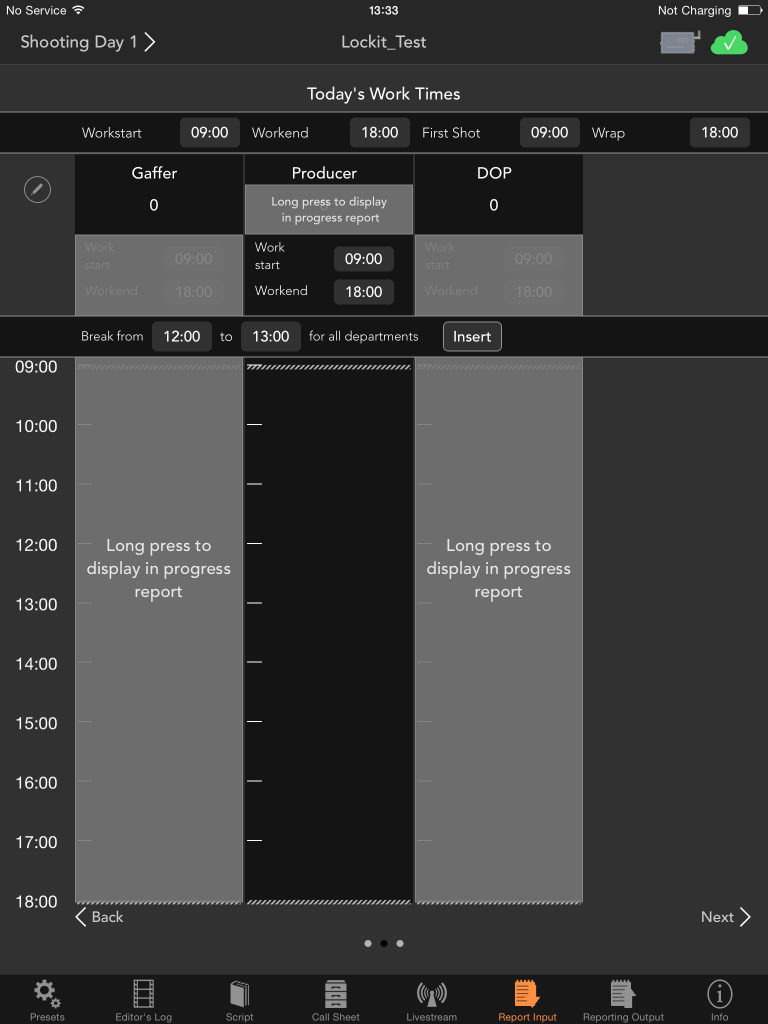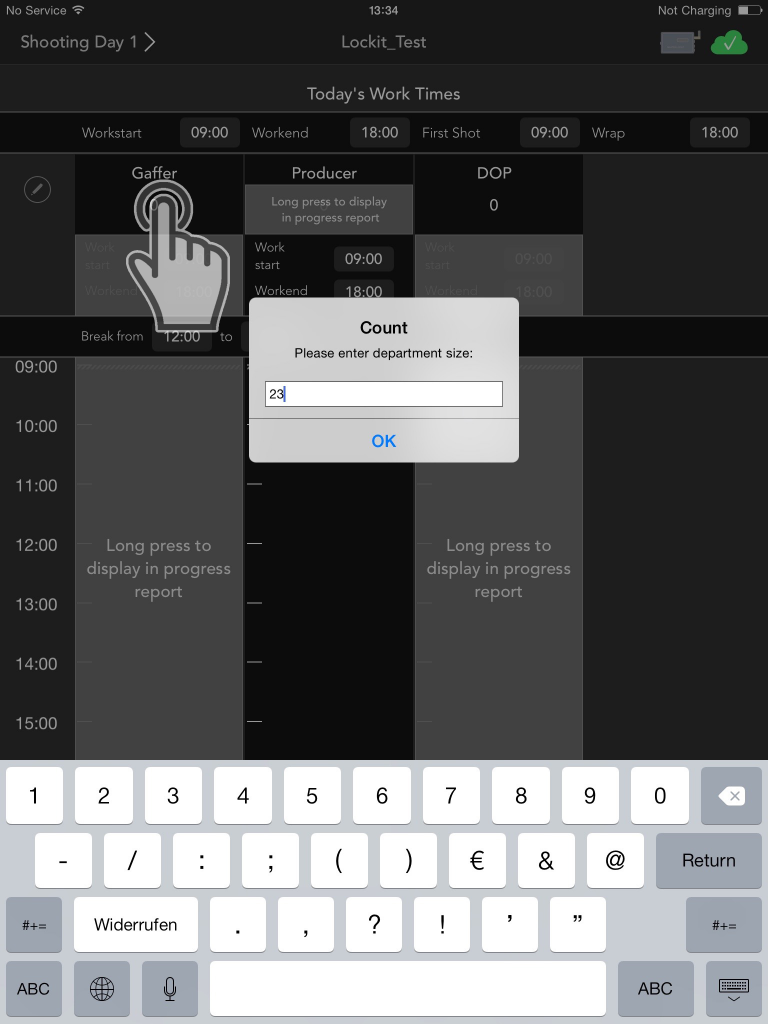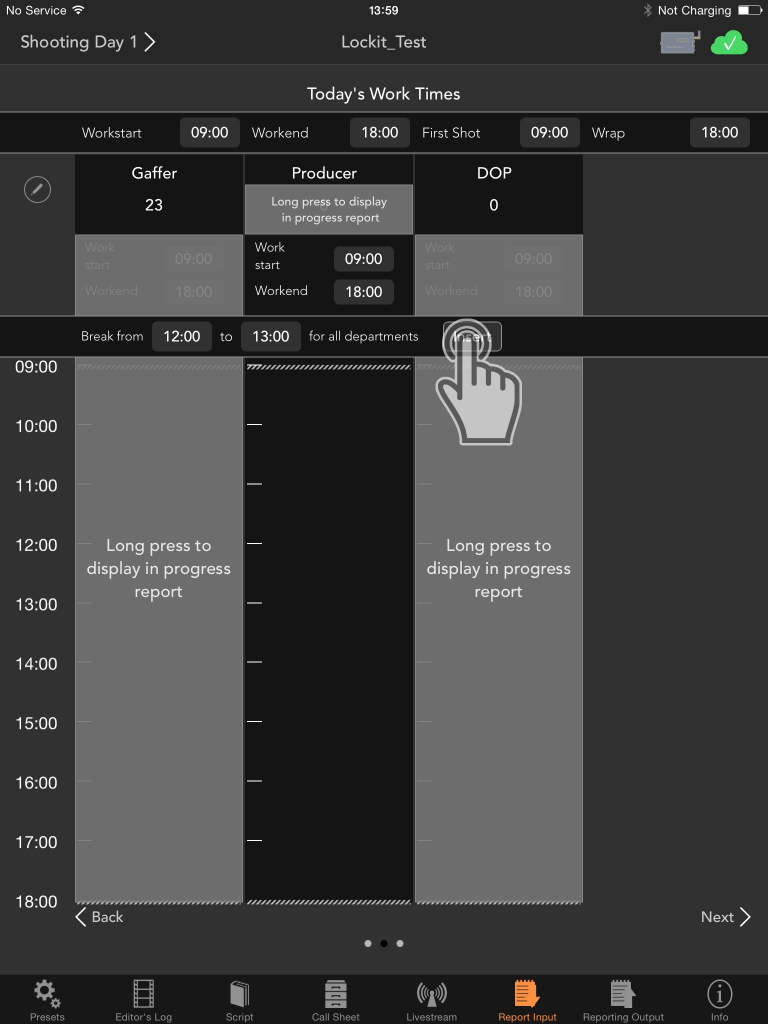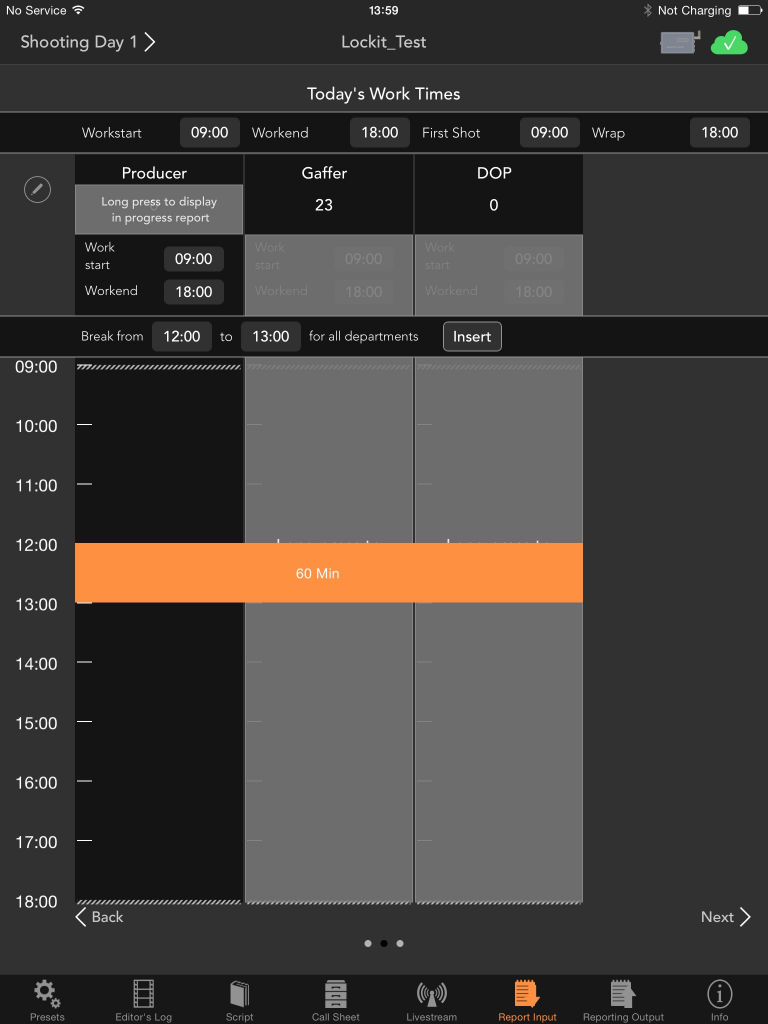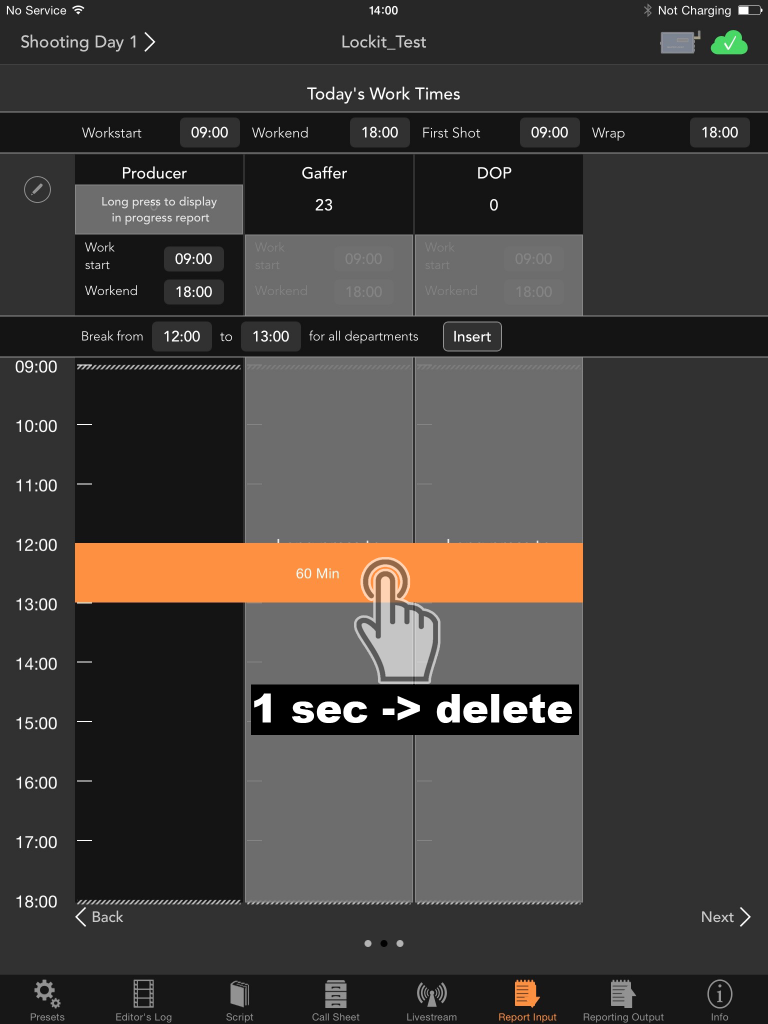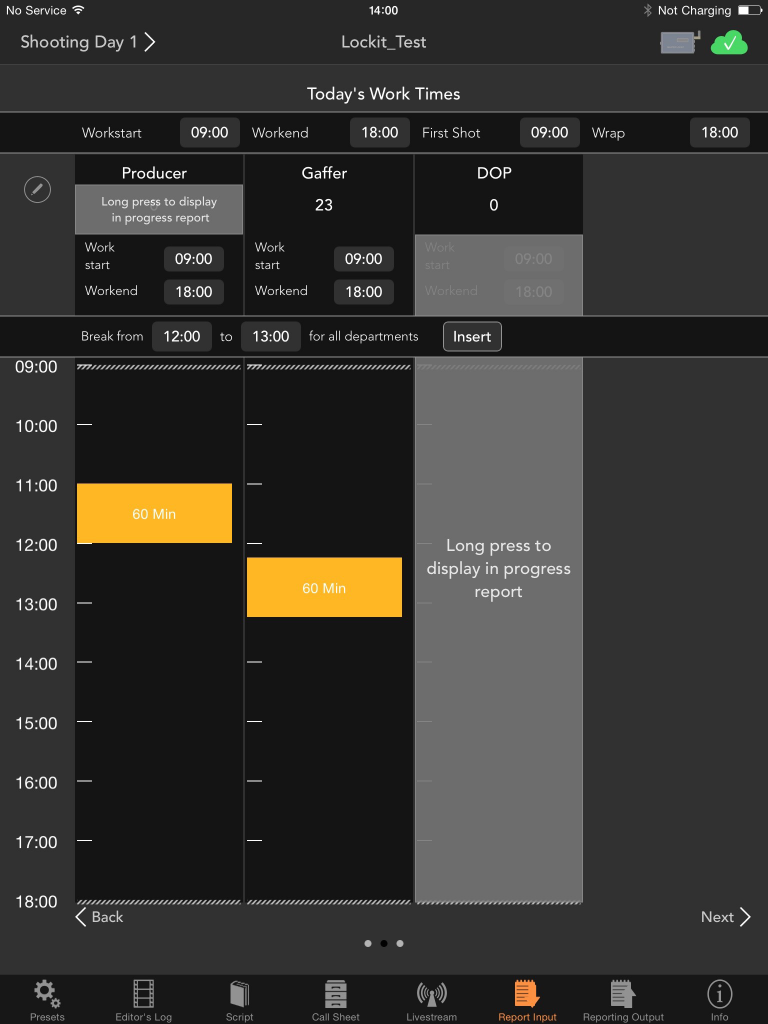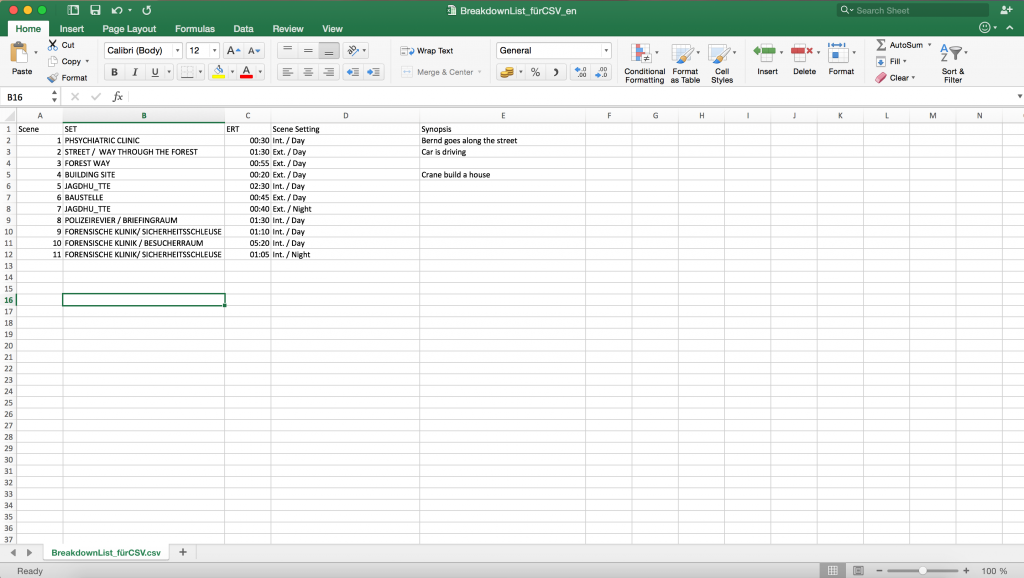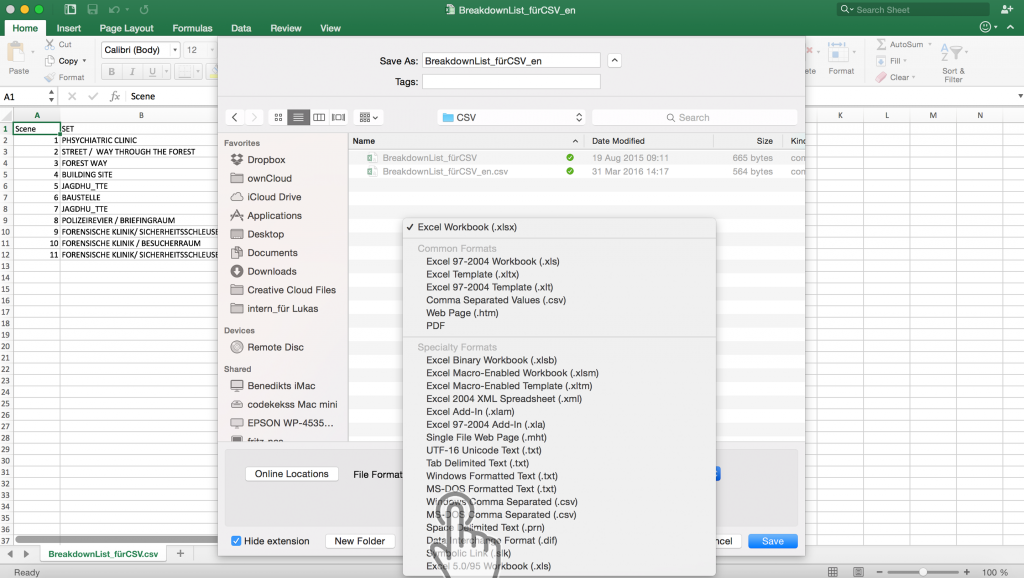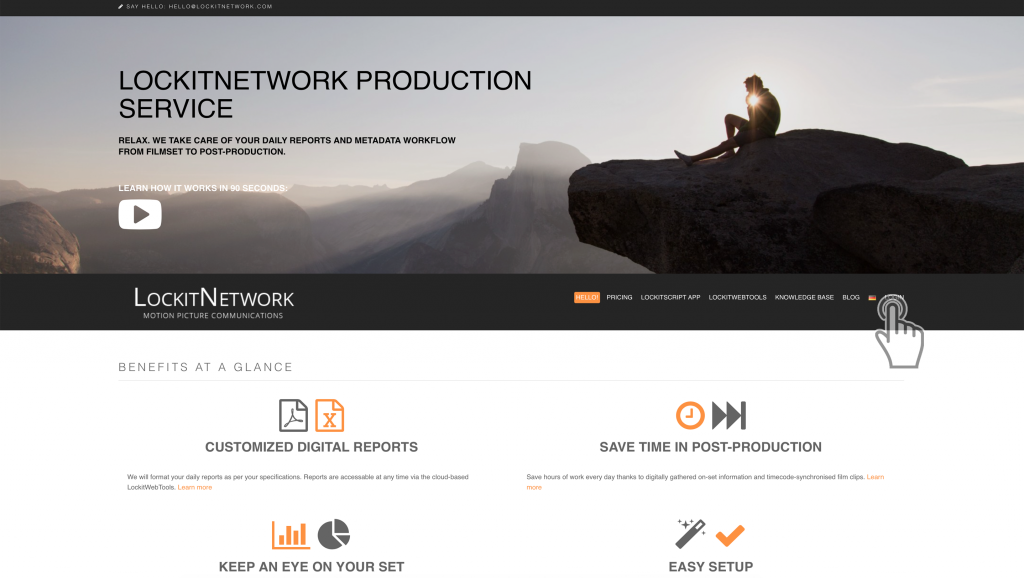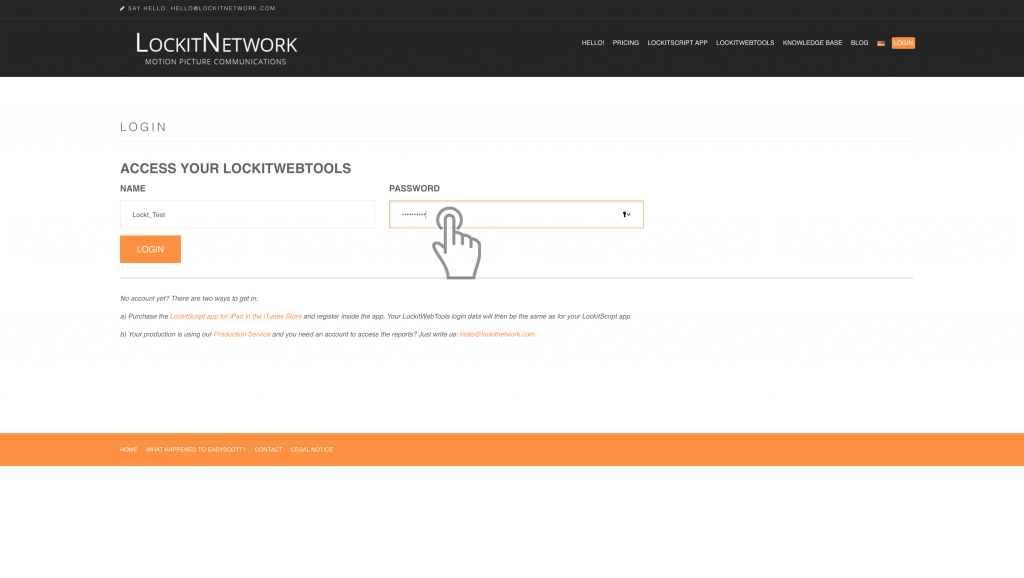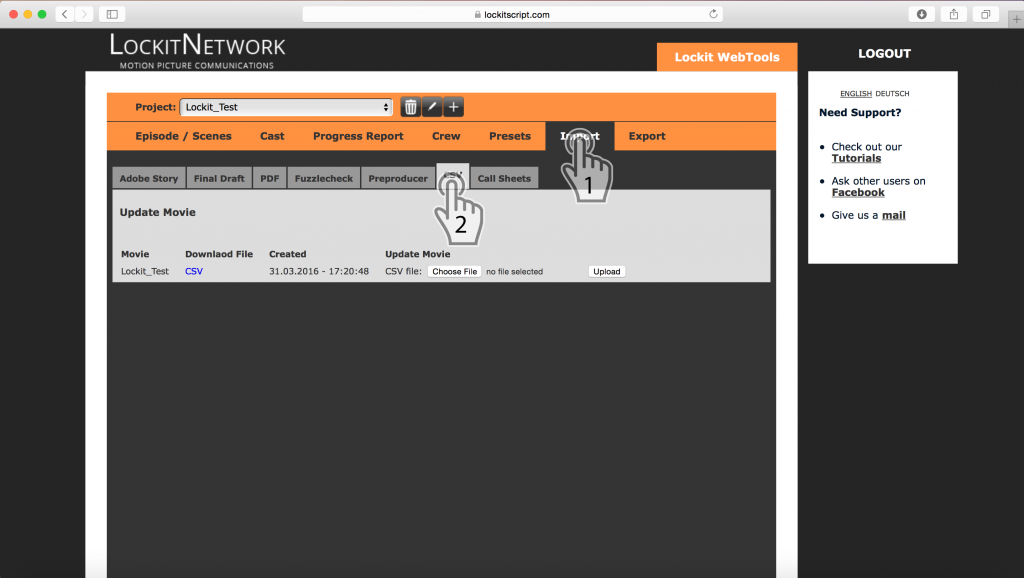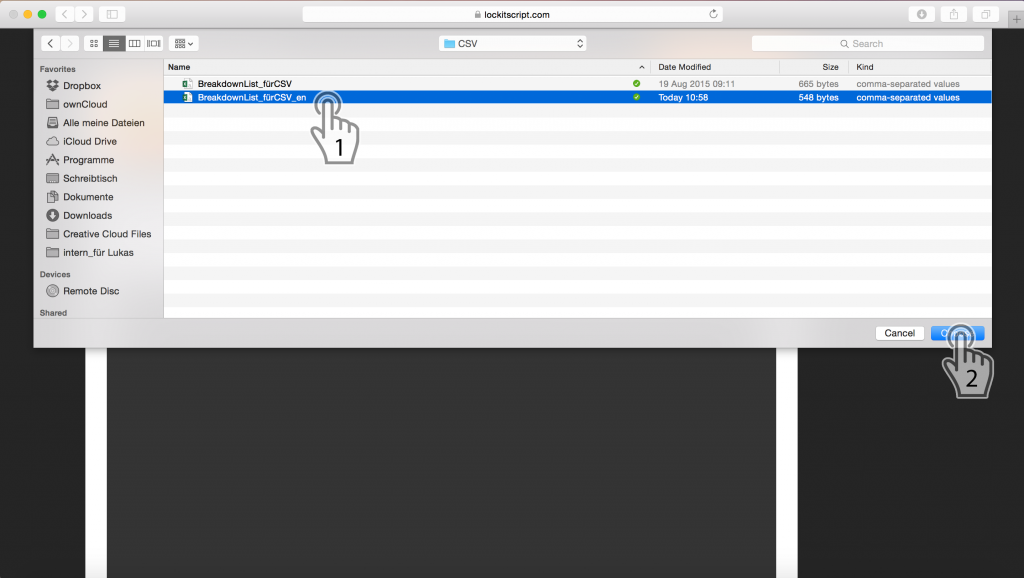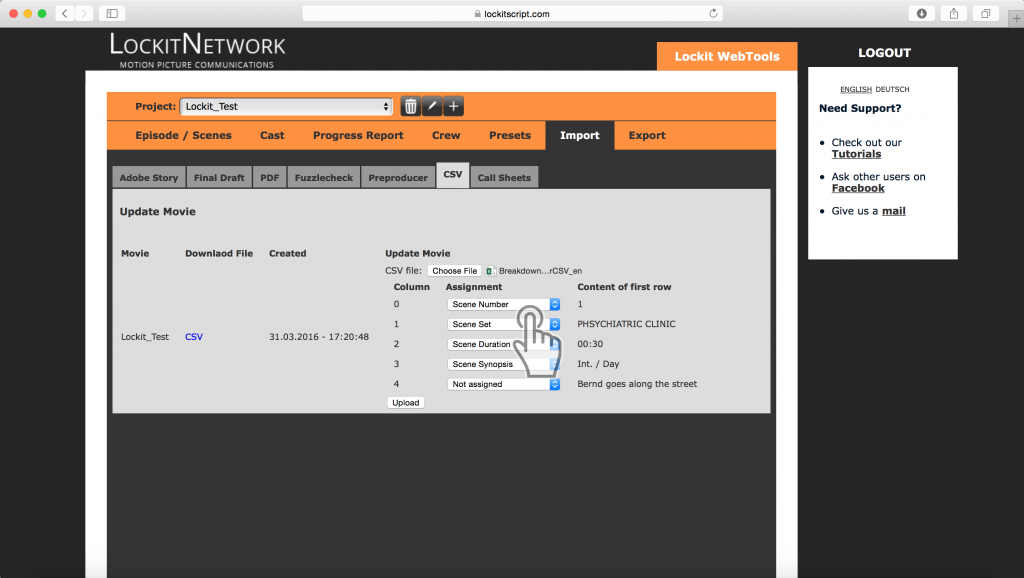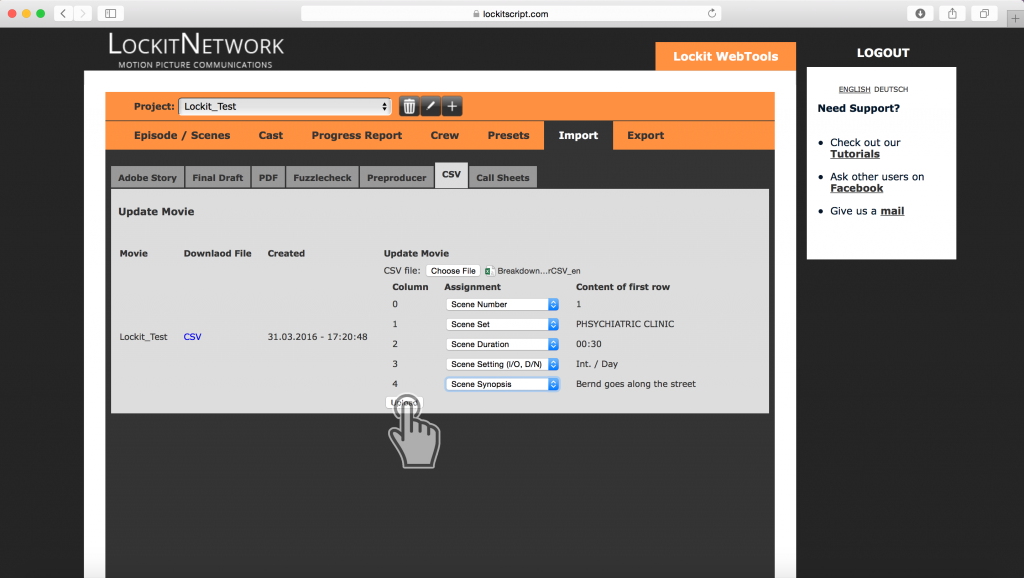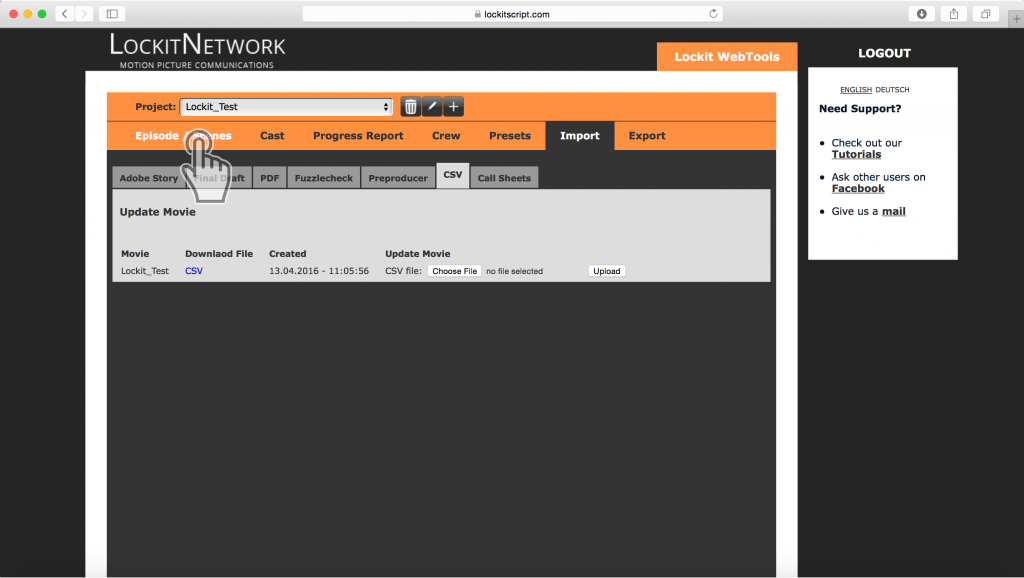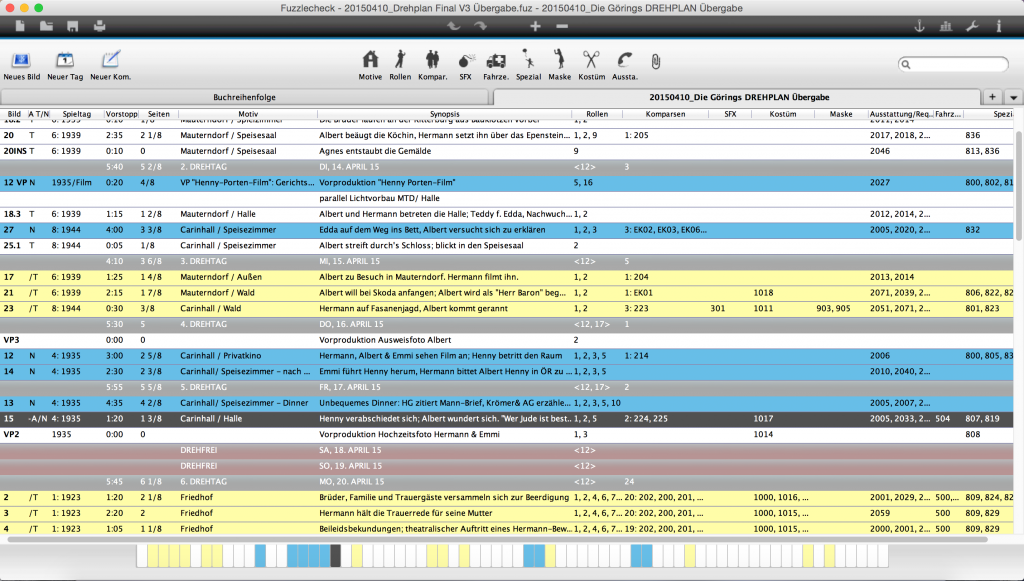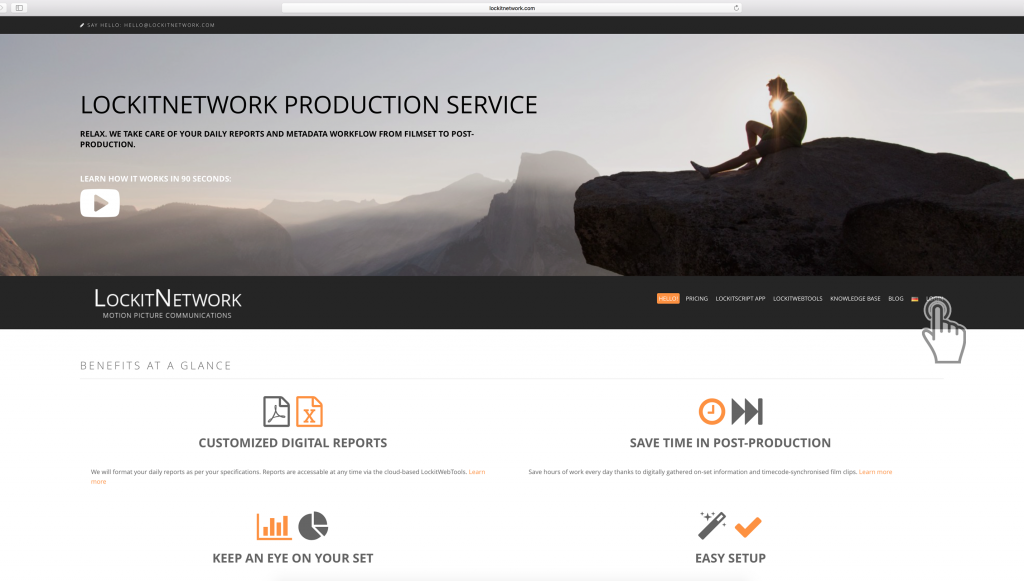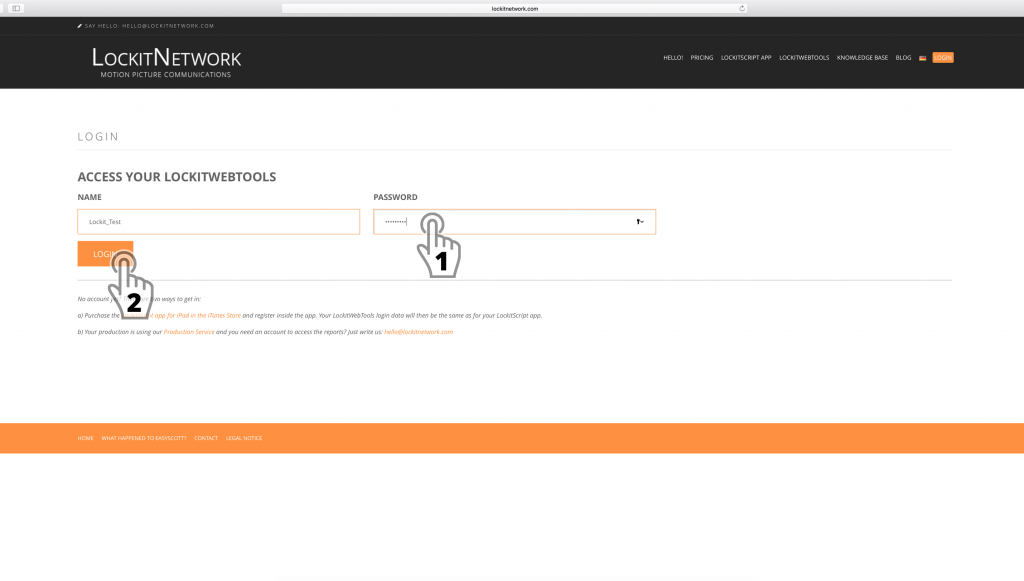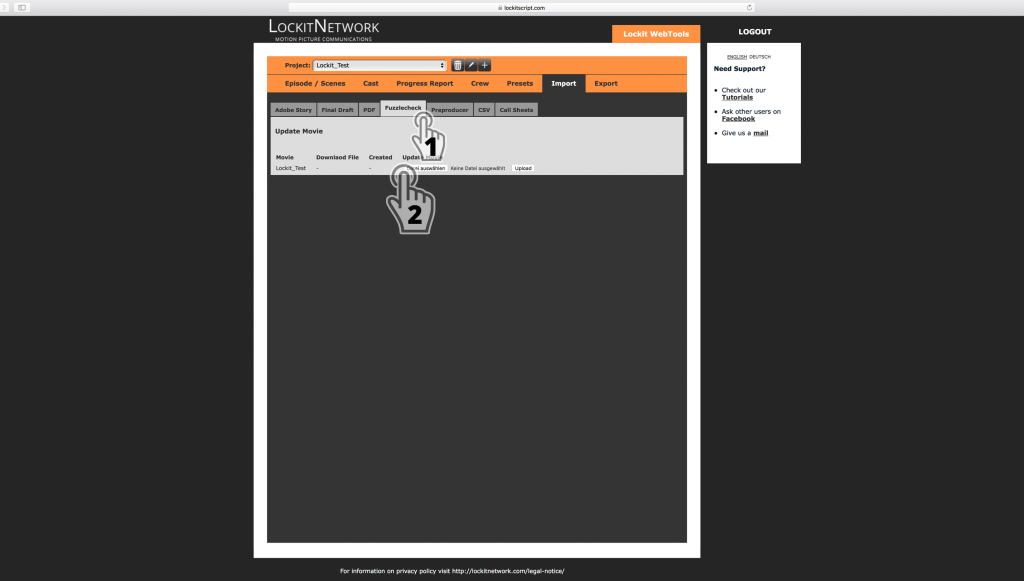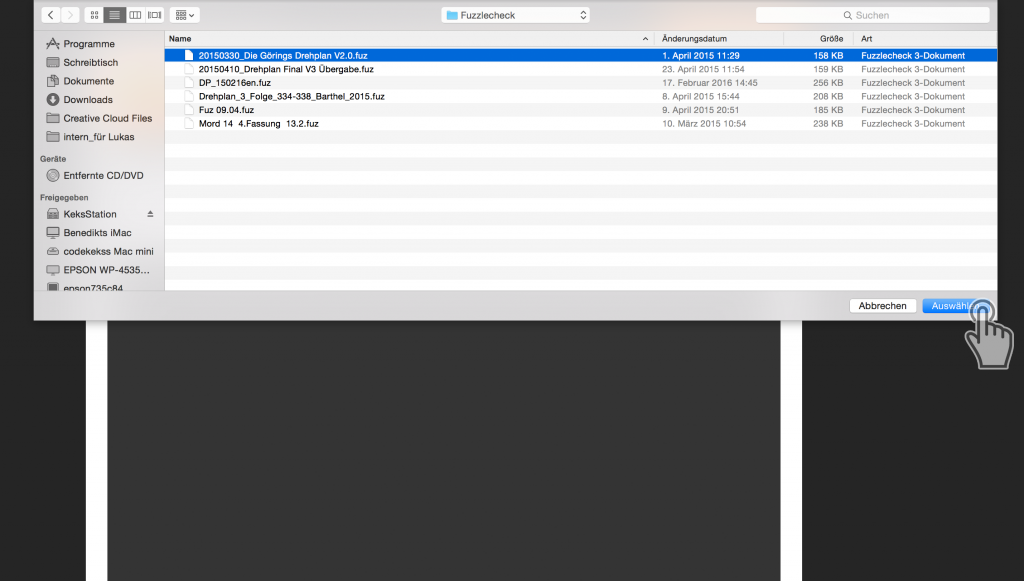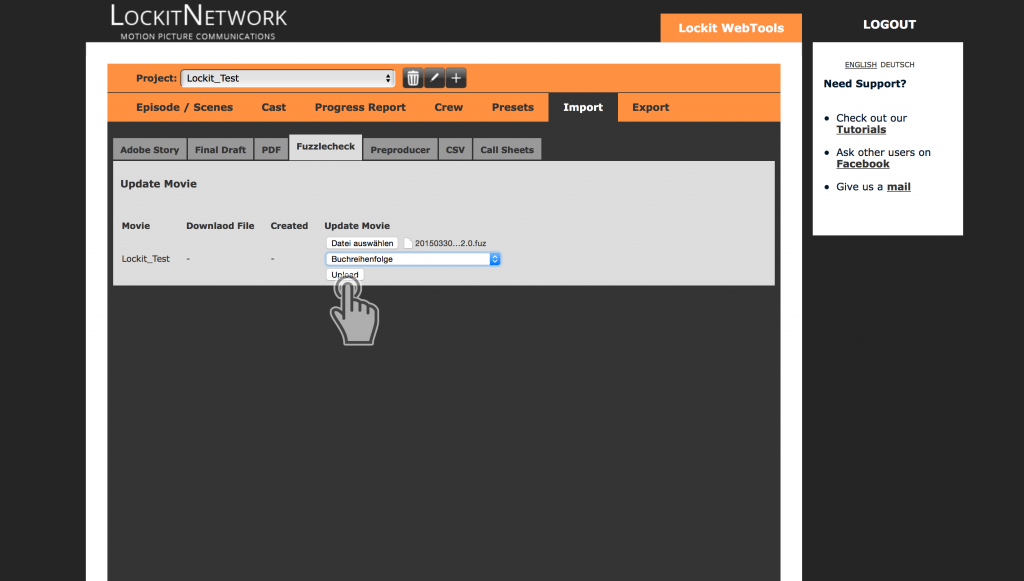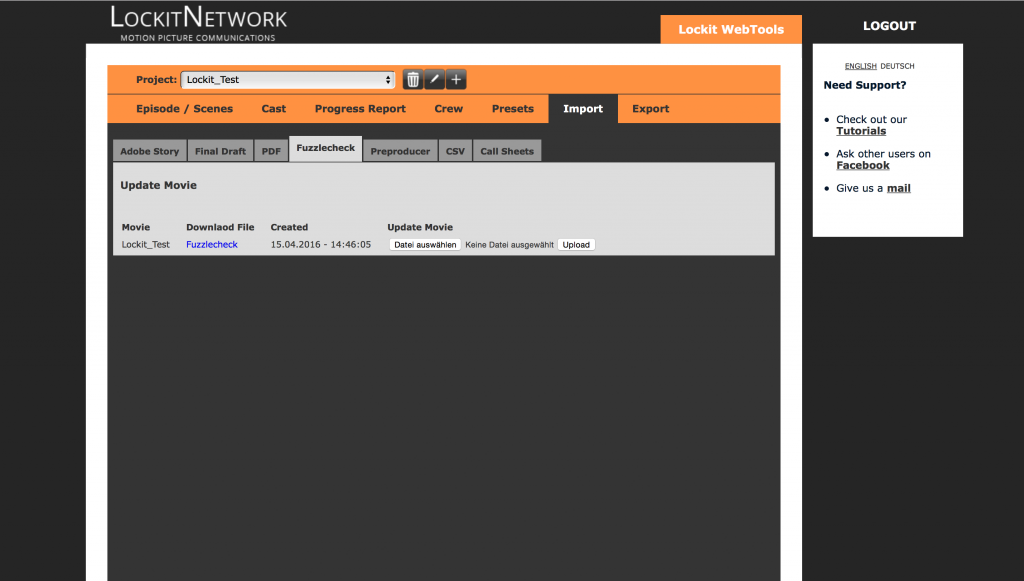LockitScript
Useful Gestures for using the app
WebTools Import
Get Started!
Prepare your projects easily in a browser and synchronise information with the LockitScript app afterwards. The most efficient way to get started is our time-saving importing module.

Upload a growing number of popular script writing and pre-production software files into the LockitWebTools. Our import module extracts scene information such as scene, ERT /ART, sets, IN/OUT, DAY/NIGHT… and you can start working right away!
Final Draft Script
Adobe Story Script
Excel / CSV
Fuzzlecheck-File
Pre-Producer Import
PDF script and call sheet
Tutorials
WebTools Export
ALE Workflow with Avid Media Composer
Learn how to import metadata from the LockitScript App into your Avid within 5 minutes – instead of typewriting piles of paper each shooting day. This feature is part of the Production Service.
Click on each step in order to see the entire process
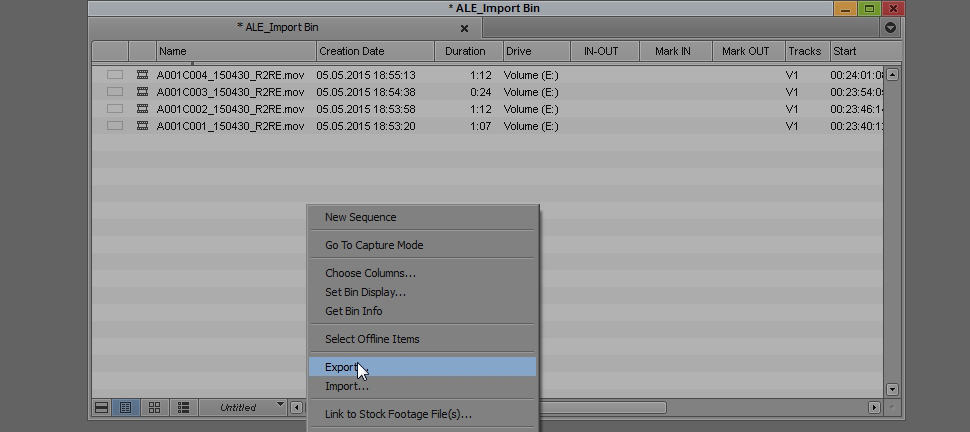
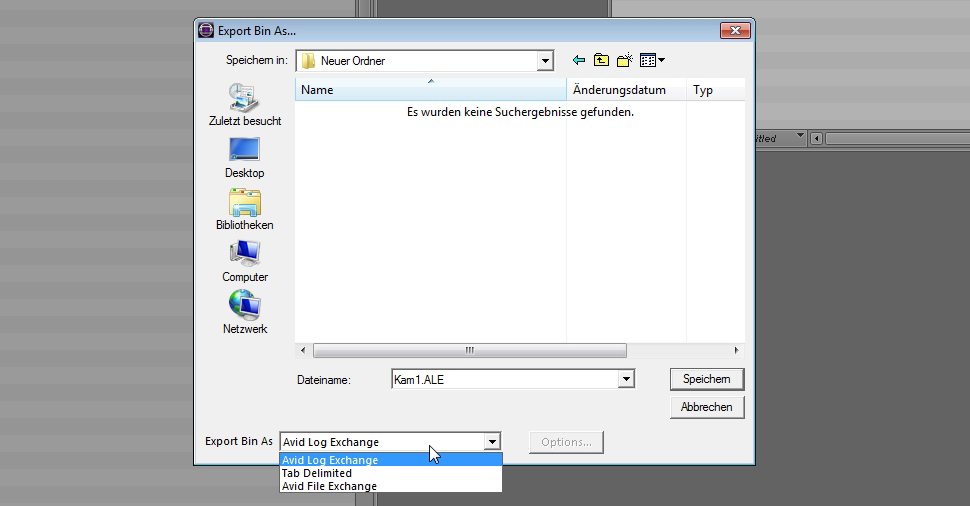
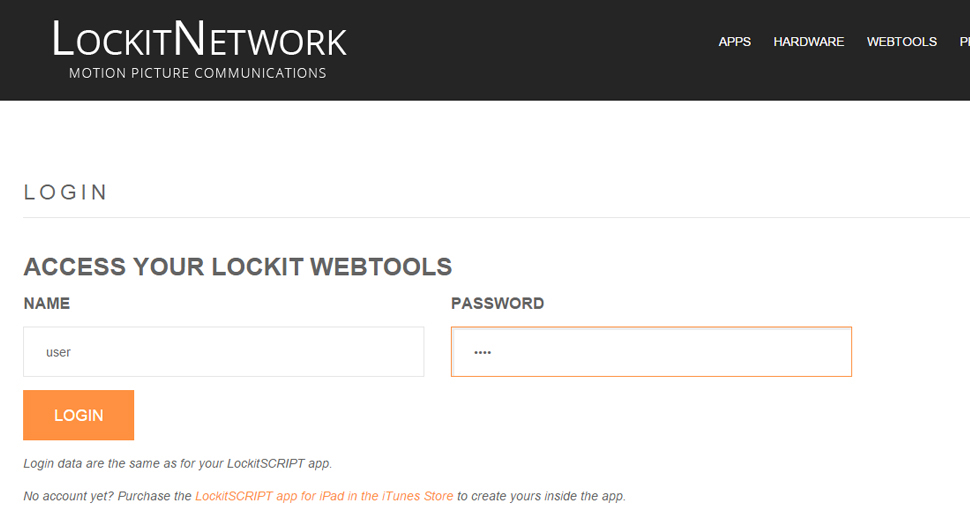
Select the desired project.
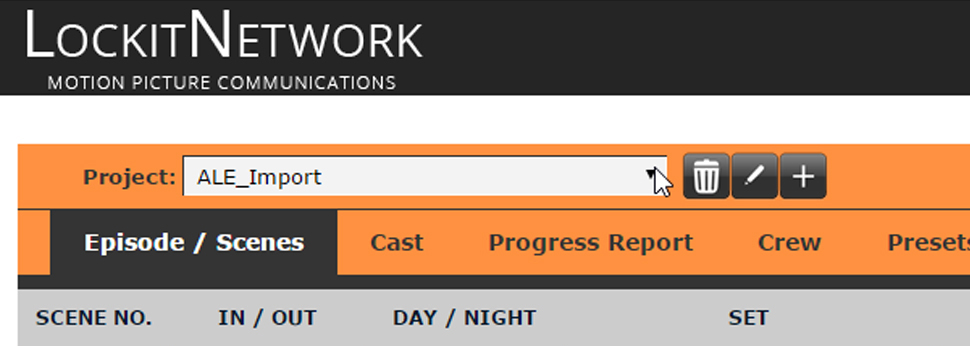



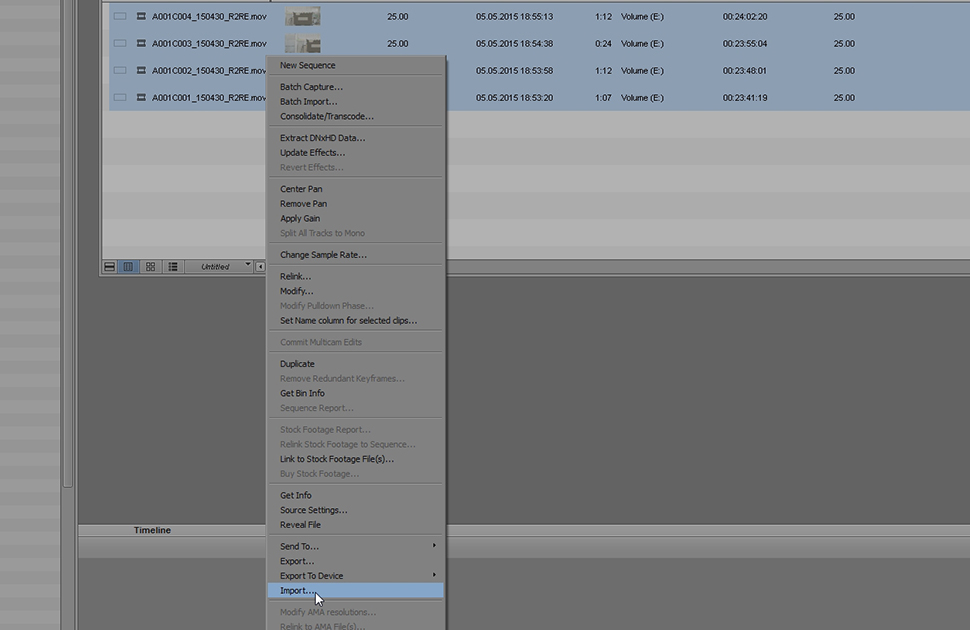
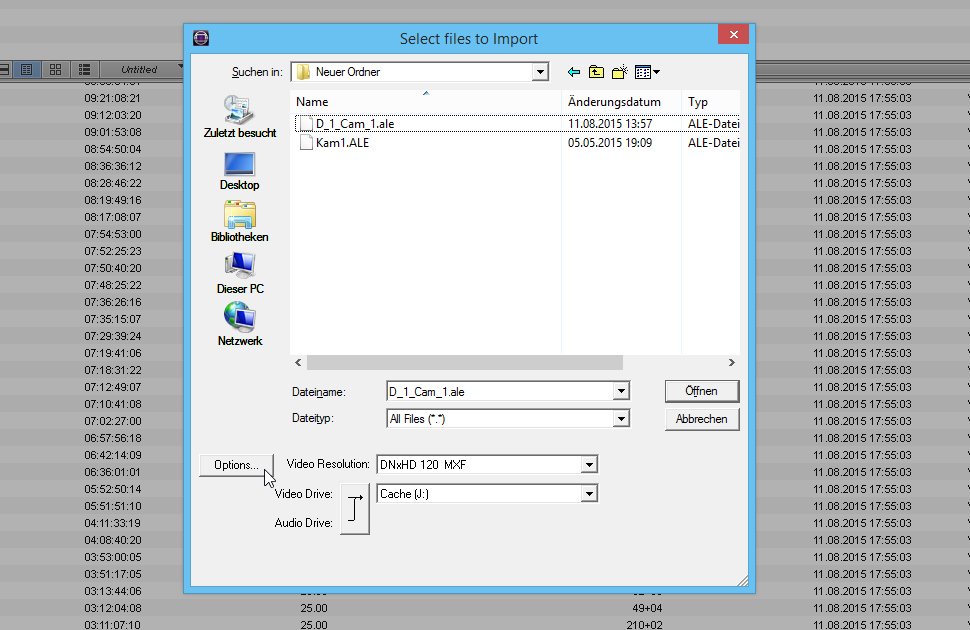
On the following screen choose “Options” and within the tab “Shotlog“ select “Merge Events with known master clips”.
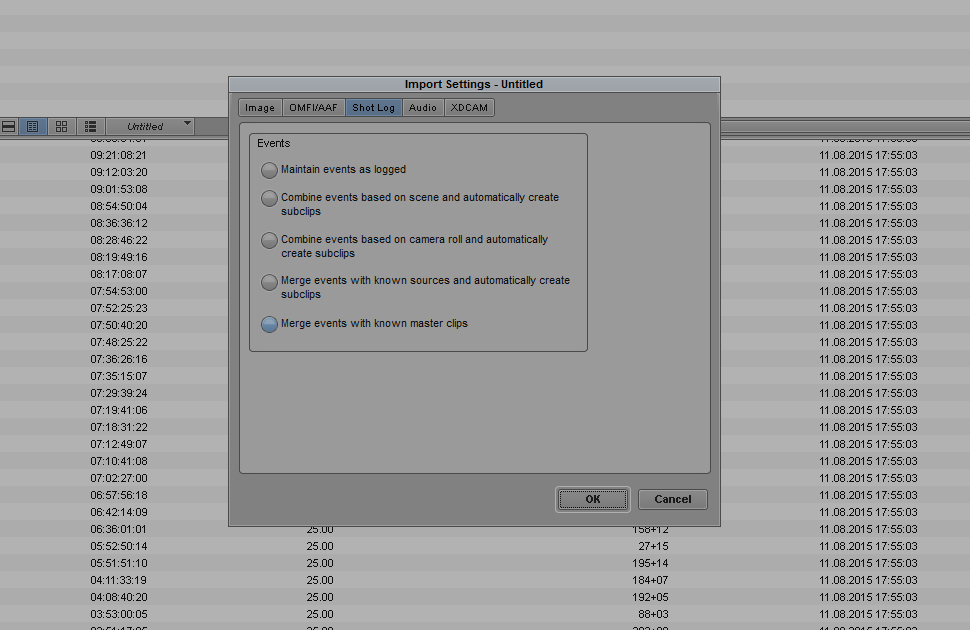
Choose “Tape” to merge the ALE with your masterclips.

The same applies to syncing audio and video files first and afterwards merging the masterclips with the ALE.
To preserve the name do the following:
In the bin with the masterclips, which have been merged with the ALE, create a new column like “BU_Name”.
Mark the column “Name” and press Ctrl-D or CMD-D.
In the following window you can copy the contents of the column “Name” to other columns. Choose “BU_Name” as target. The Media Composer sychronizes all metadata from the masterclips across all corresponding subclips.
In the bin with the subclips display all columns and mark the column “BU_Name”, which should contain the name from the ALE.
Now use Ctrl-D or CMD-D again to copy the content of that column back to “Name”.
MasterLockit Setup
Display clip names inside LockitScript
When using the LockitScript app stand-alone, clip symbols are manually created by the script supervisor for each individual camera. With a MasterLockit connected to a supported camera, clip symbols containing original clip names and some other crucial metadata from the camera are automatically sent to LockitScript via WiFi and are displayed within the app.
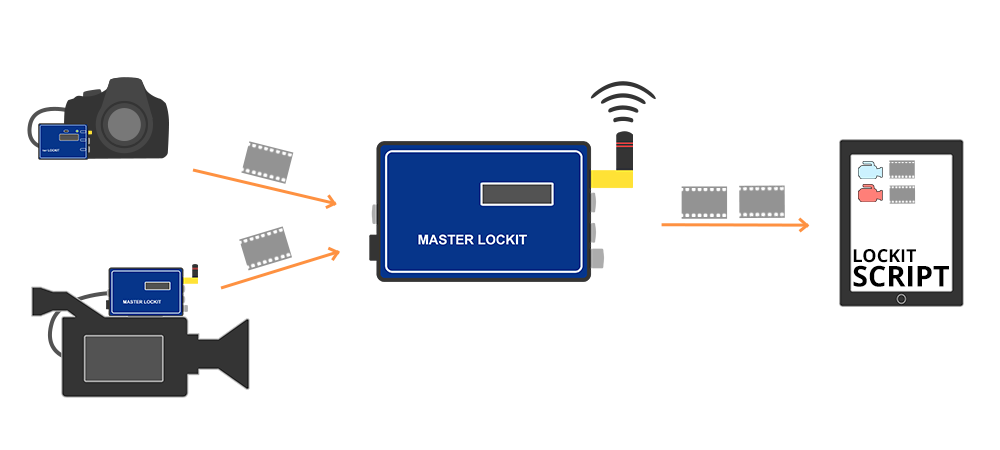
How-To:
- Connect the MasterLockit to a supported camera
- Connect your iPad to the MasterLockit’s WiFi (WiFi password is always the same as the WiFi name)
- Access the MasterLockit web interface in any browser by entering http://10.0.0.1 or tap on the MasterLockit icon on the top inside the LockitScript App
- Go to tab “Metadata Network” and follow instructions to establish connection to the camera
- Activate the MasterLockit clip import in the LockitScript Preset Tab, select the camera and hit “Start”
- That’s it. Now hit the “Record”-Button on the camera and see a clip symbol containing metadata information appearing in your app
Supported Cameras:
- ARRI Alexa
- RED Series
Displayed Metadata:
- Clip Name
- CamRoll Name
- Fps
- Filter
- TC Start / Stop
Monitor and remote control Lockit Timecode devices
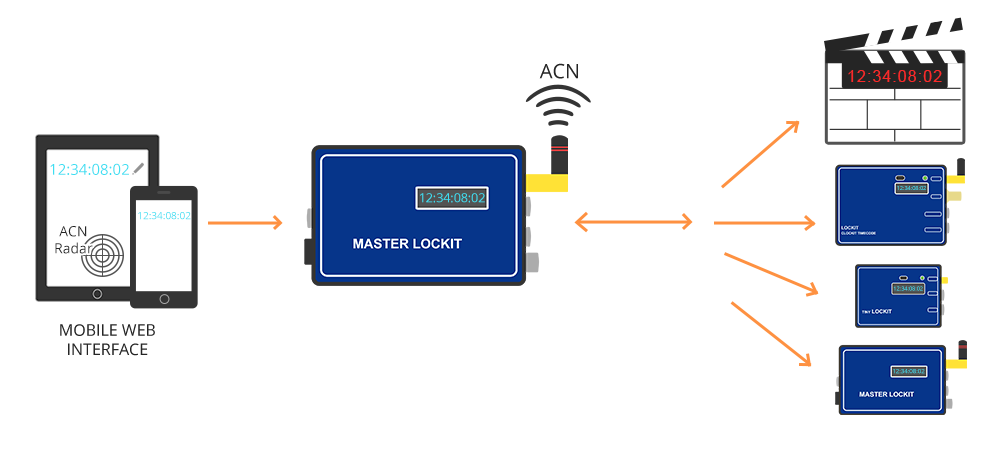
How-To:
- Start all Lockit devices and make sure they are all in the same ACN channel.
- Connect your smartphone to the MasterLockit’s WiFi (WiFi password is always the same as the WiFi name).
- Access the MasterLockit web interface in any browser by entering http://10.0.0.1 or tap on the MasterLockit icon on the top inside the LockitScript App.
- That’s it. Now you can manage your Lockits in the “Timecode” tab.
Supported Devices:
- MasterLockit (ACN-ML)
- Tiny Lockit (ACN-TL)
- Lockit (ACL 204)
- Lockit Slate (ACN-LS)
Features:
- Set TC
- Set ACN channel and activate C-Jam
- Check battery status of all Lockit Devices on set
- Check fps
- Name your Lockit Devices for better overview
Download Content Metadata of Every Single Clip
With the LockitScript app, script supervisors note content information for every single clip. The MasterLockit’s web interface enables DITs to download important clip-based content information directly on set via the MasterLockit’s local WiFi – instead of connecting to the cloud-based LockitWebTools.
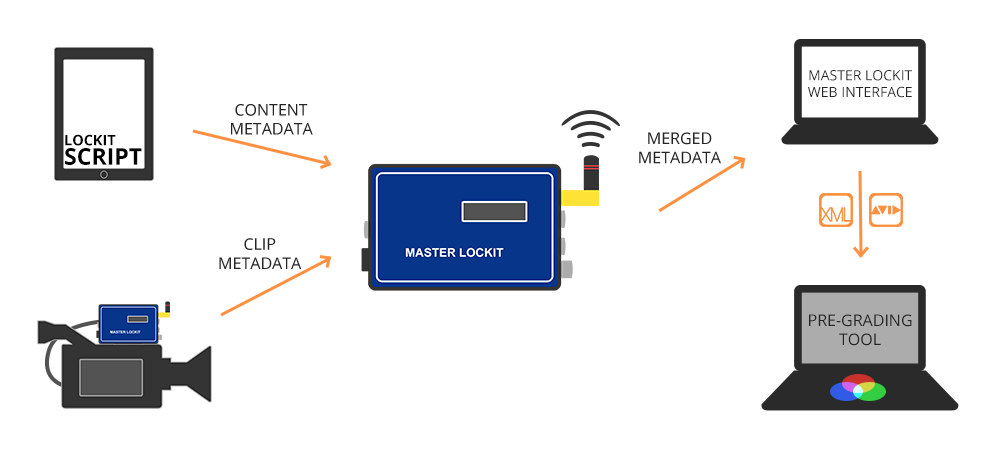
How-To:
- Convince your team to work with the LockitScript app and a MasterLockit
- Connect your Laptop to the MasterLockit’s WiFi (WiFi password is always the same as the WiFi name)
- Access the MasterLockit web interface in any browser by entering http://10.0.0.1
- That’s it. Go to tab “Metadata Export” and select the information and format you need
Export Formats:
- ALE
- CSV
- JSON
- EXCEL (Shotlog)

